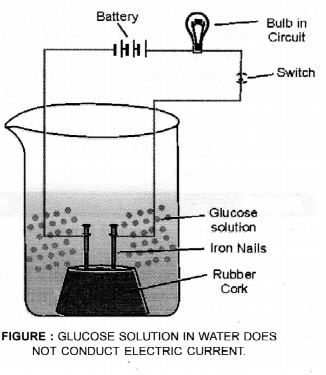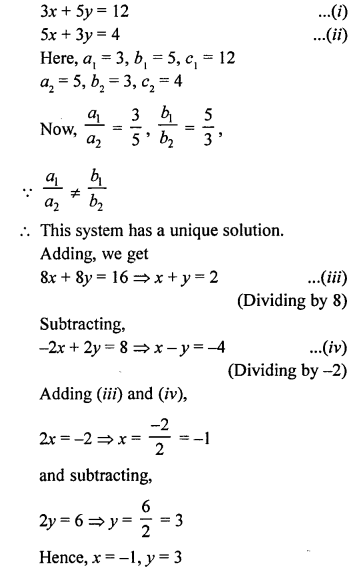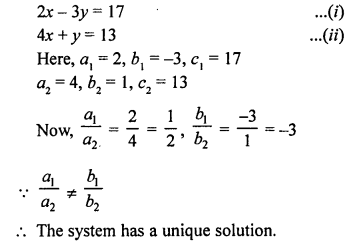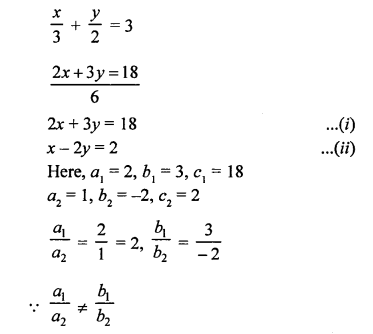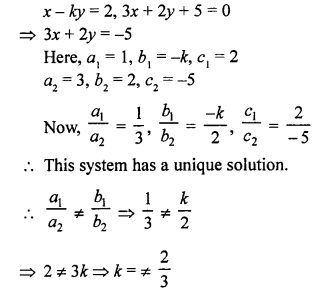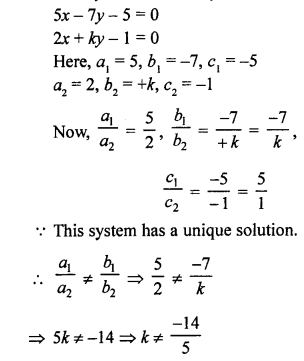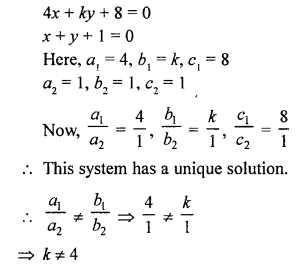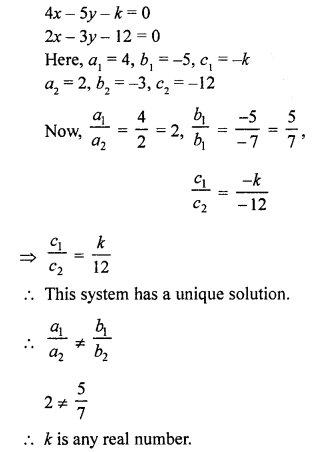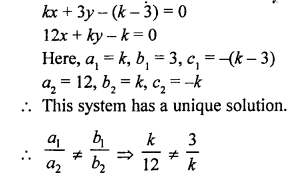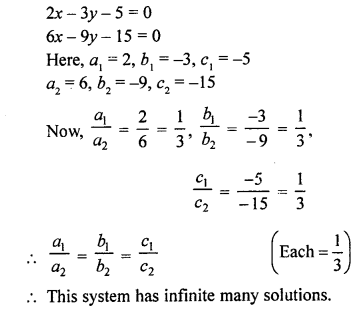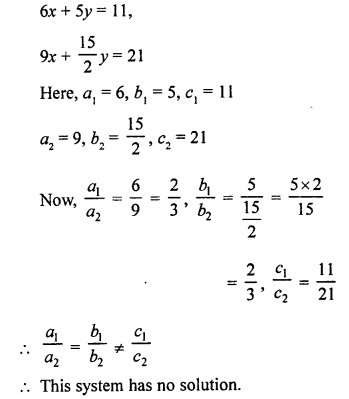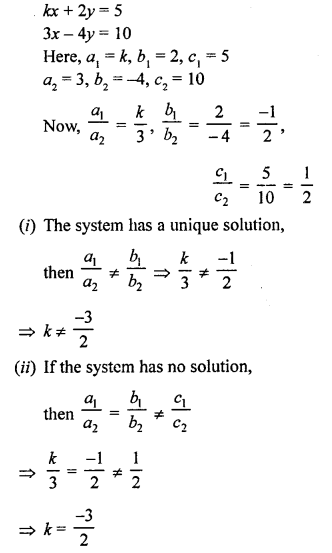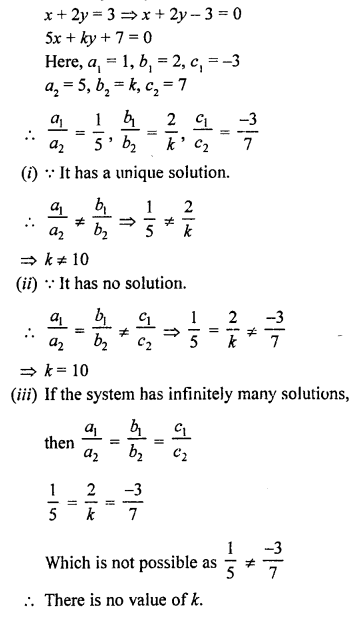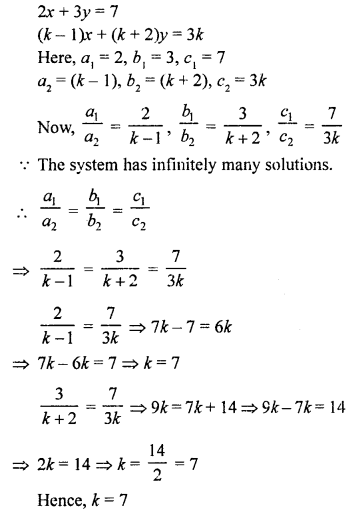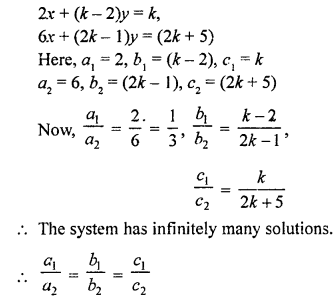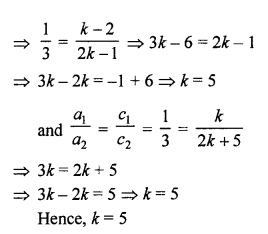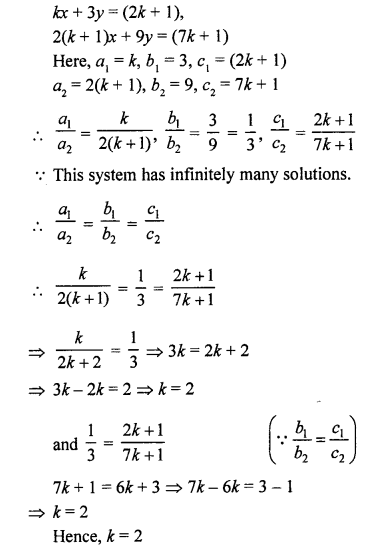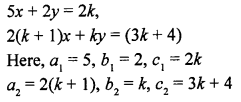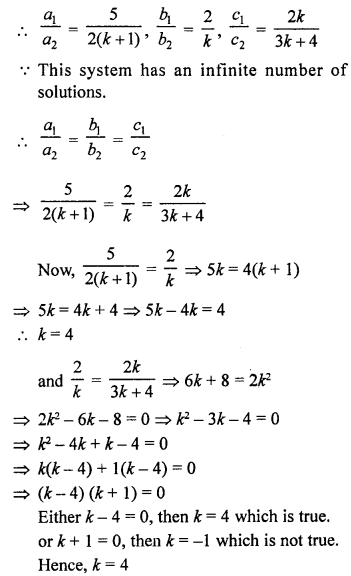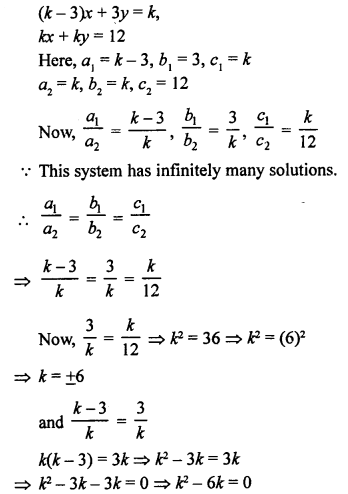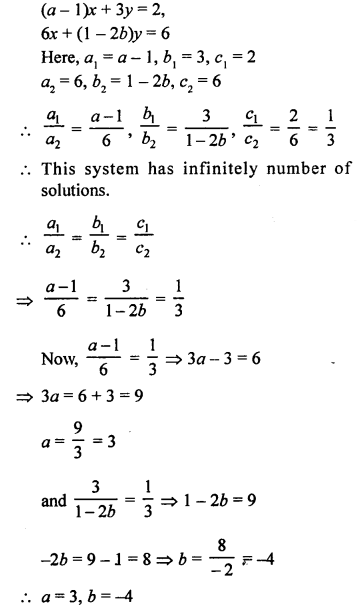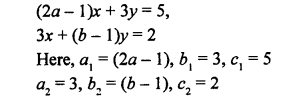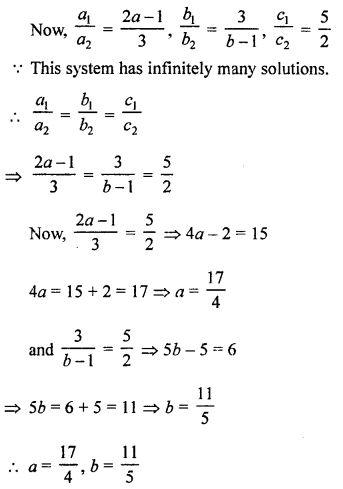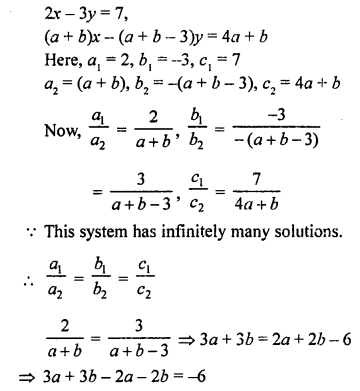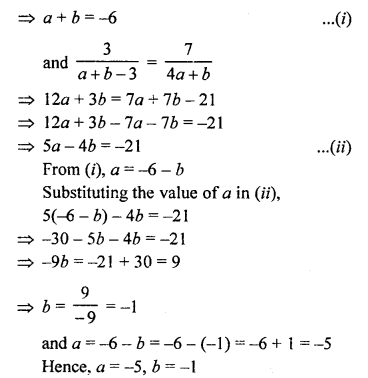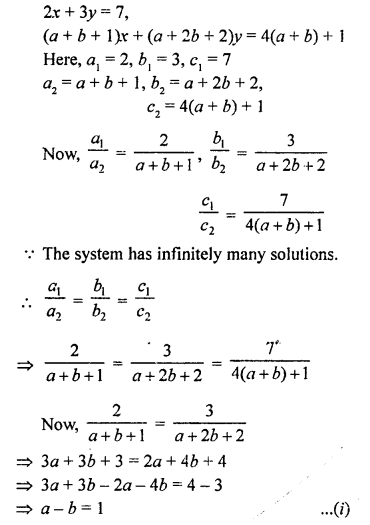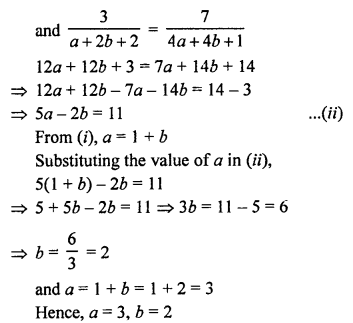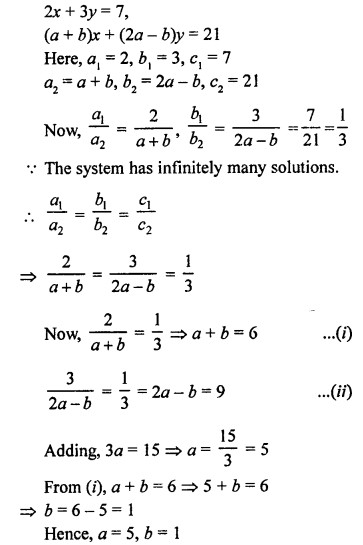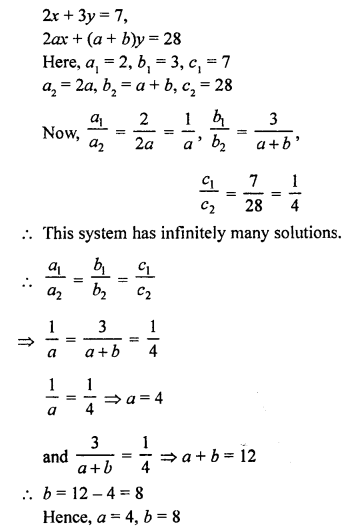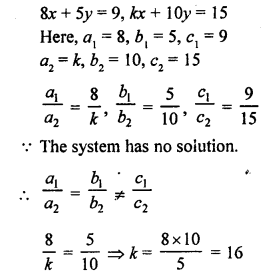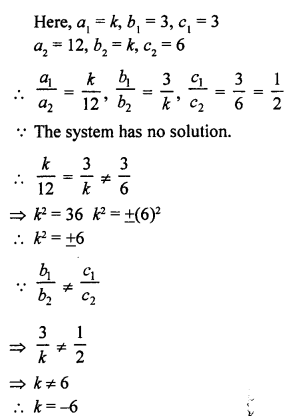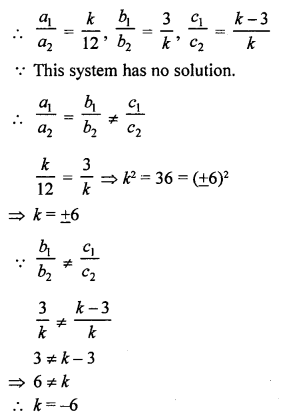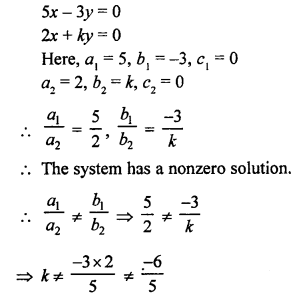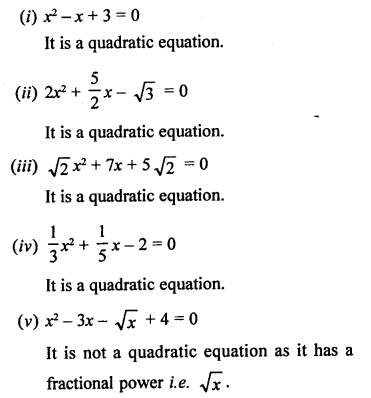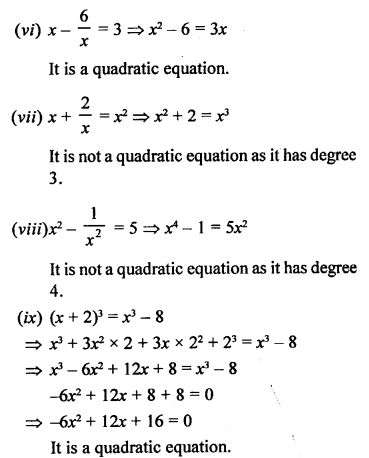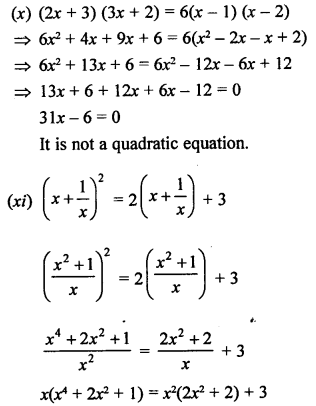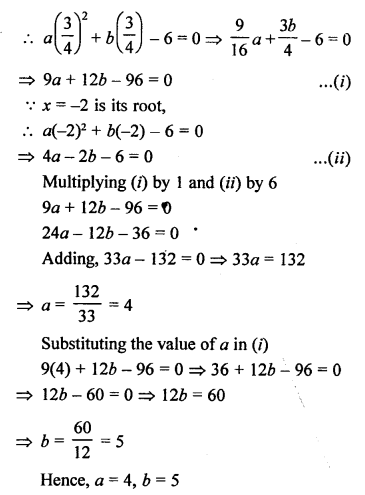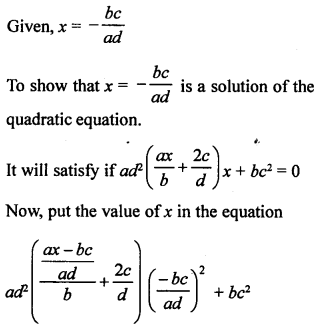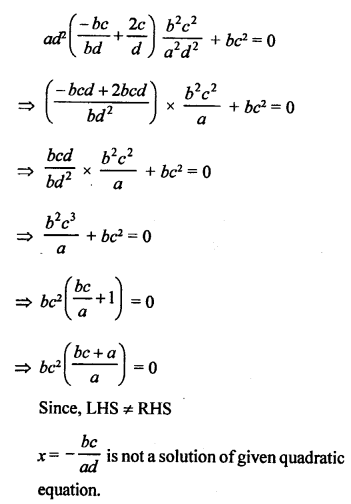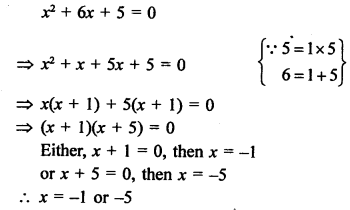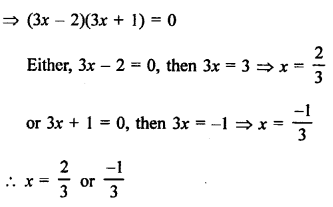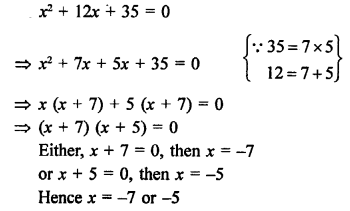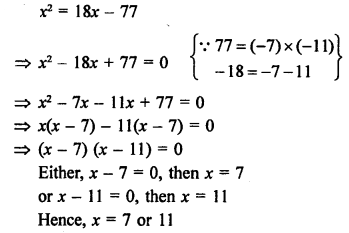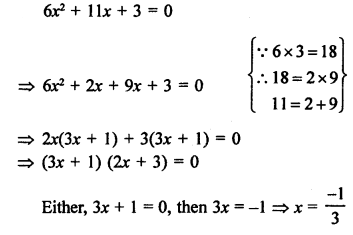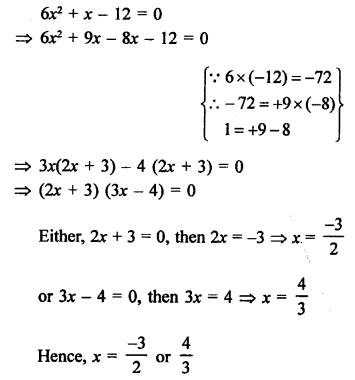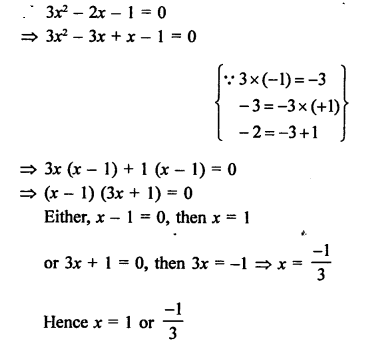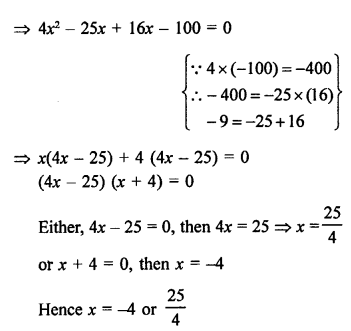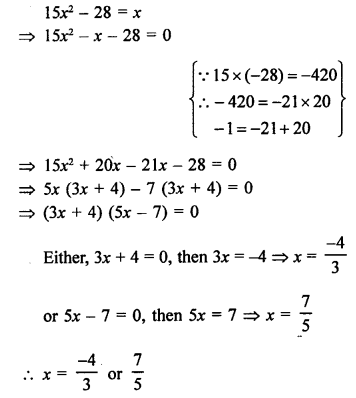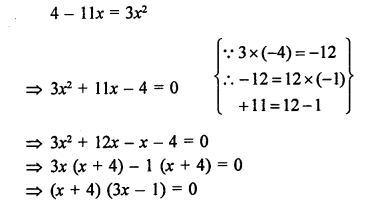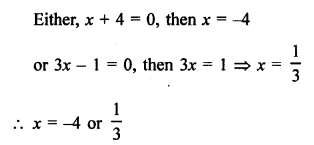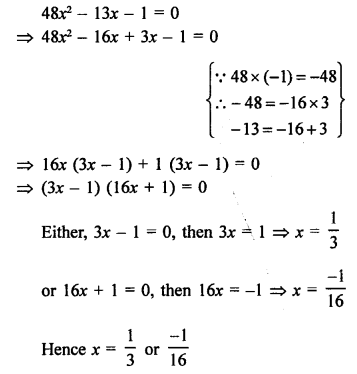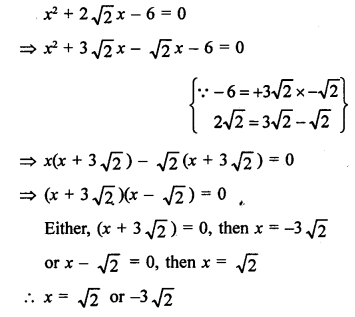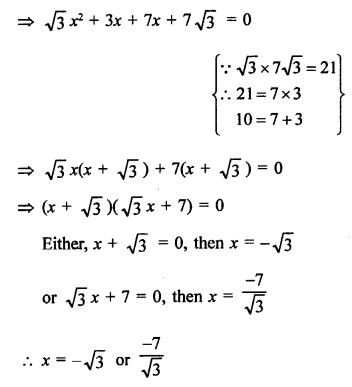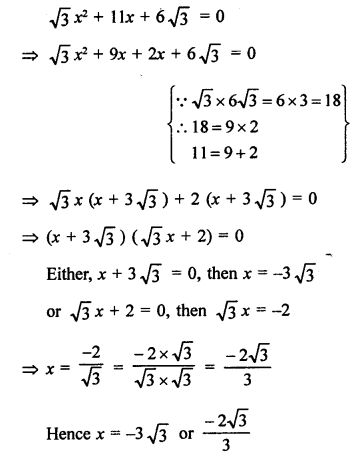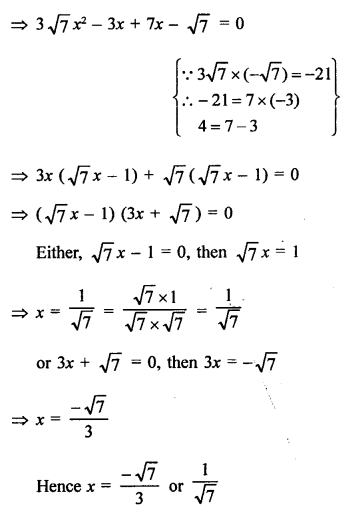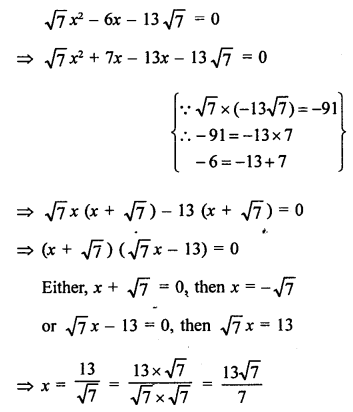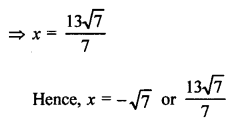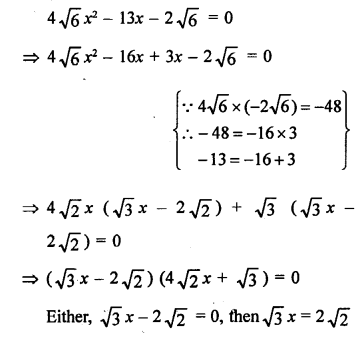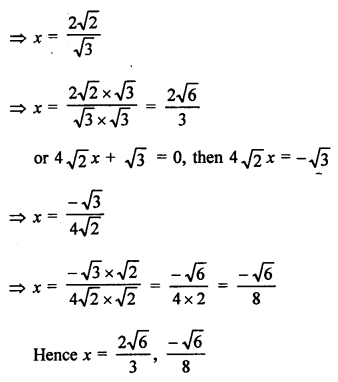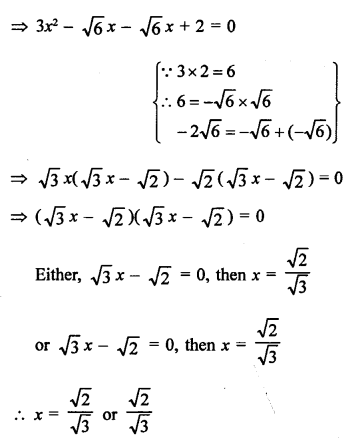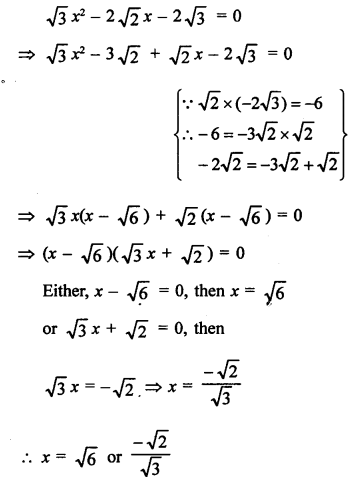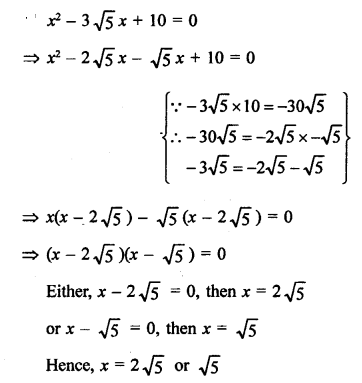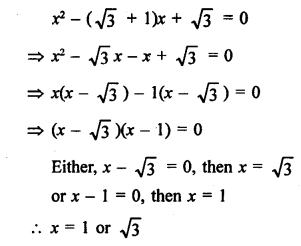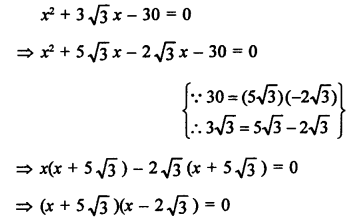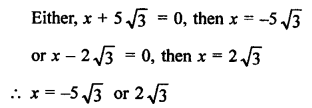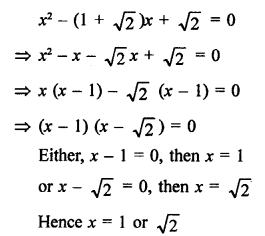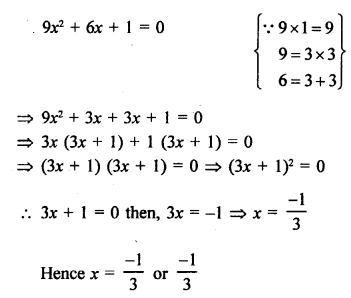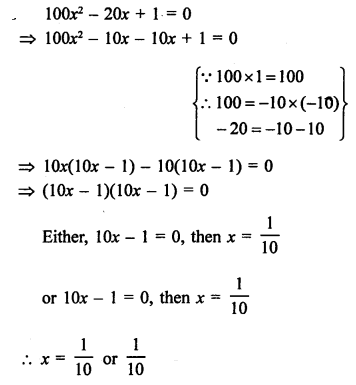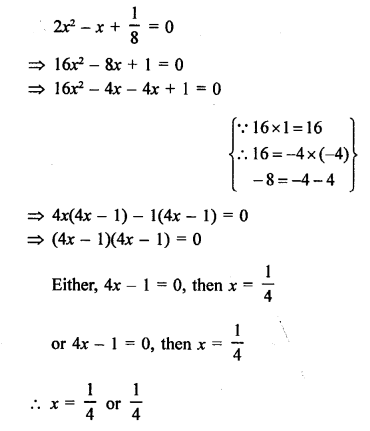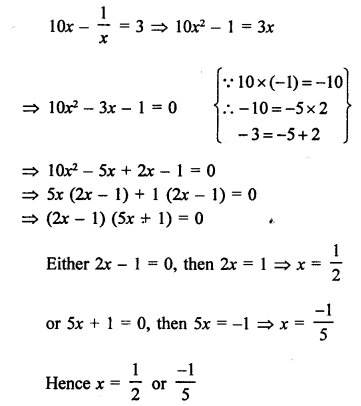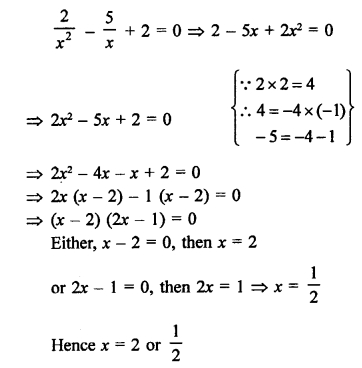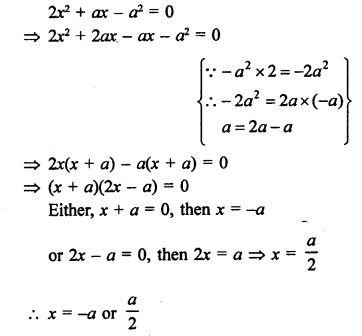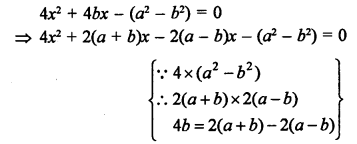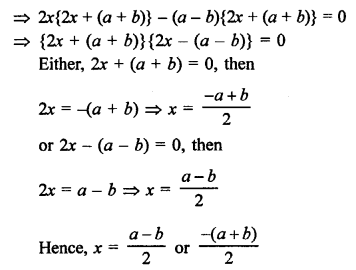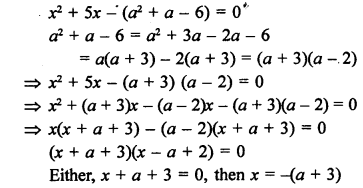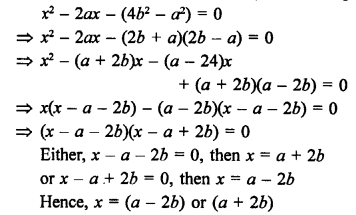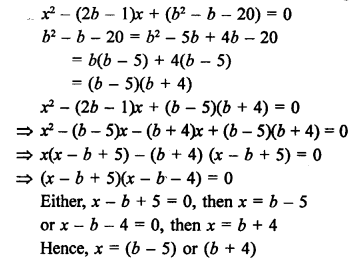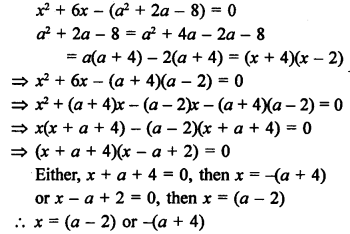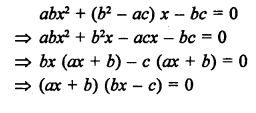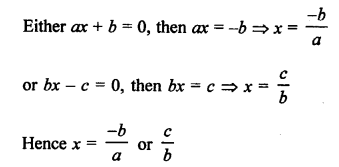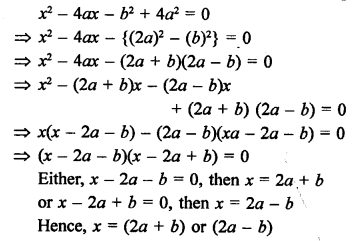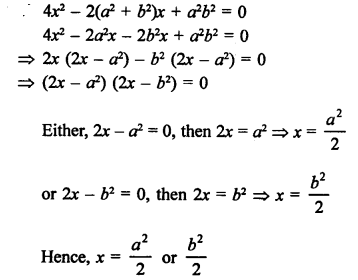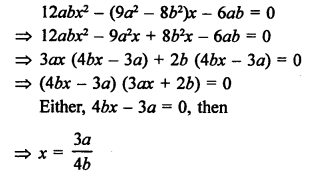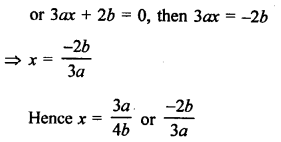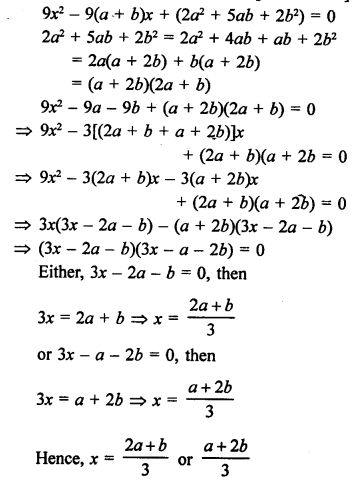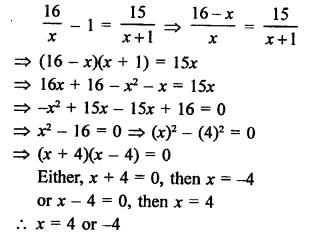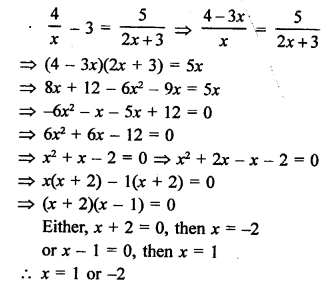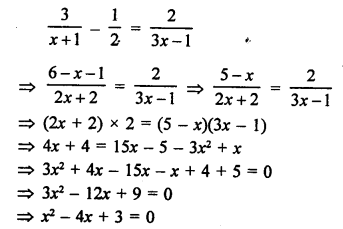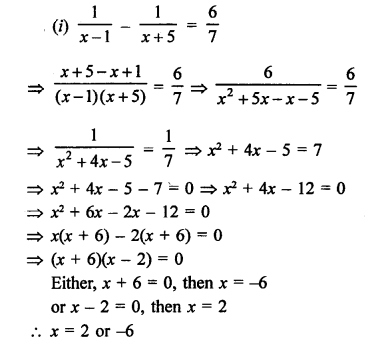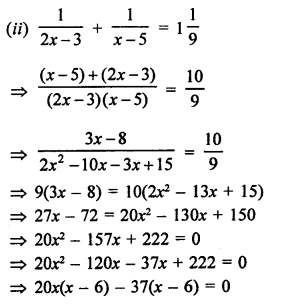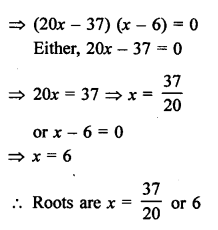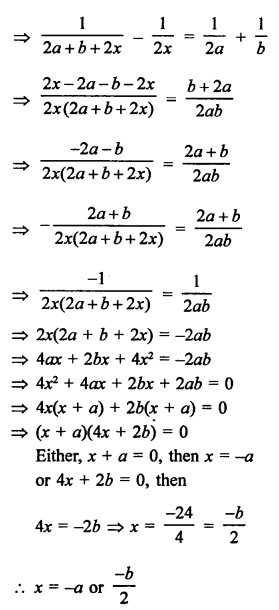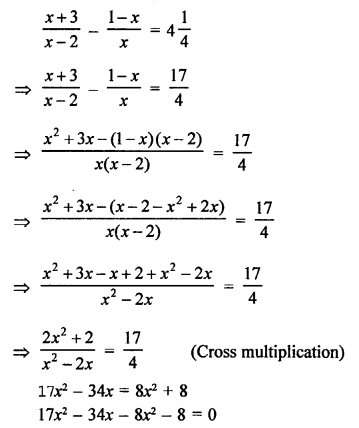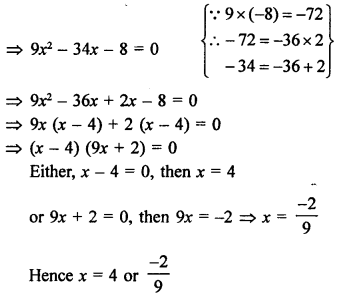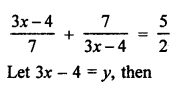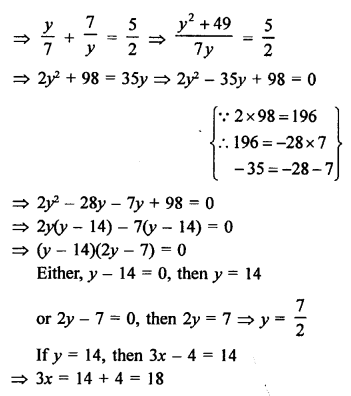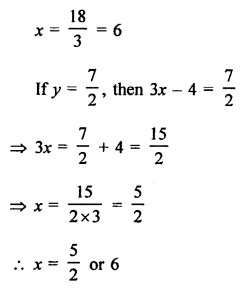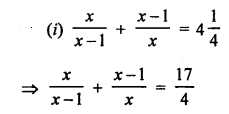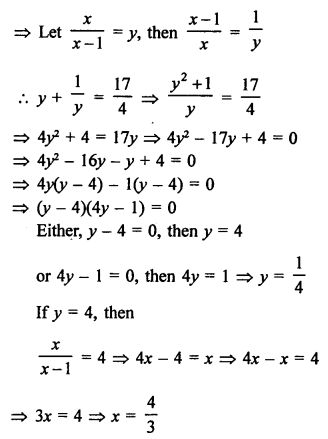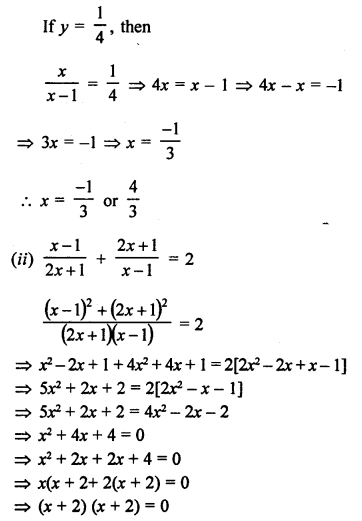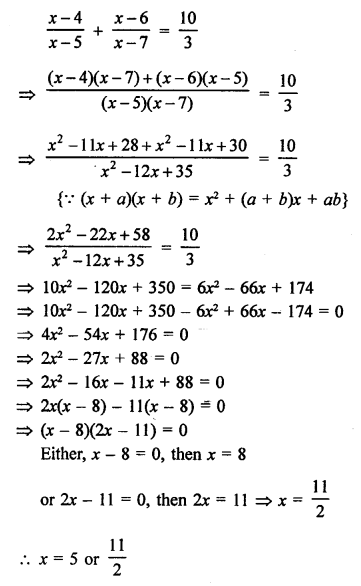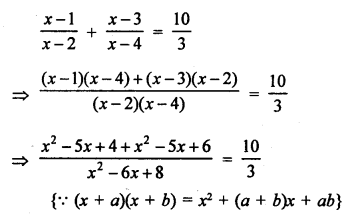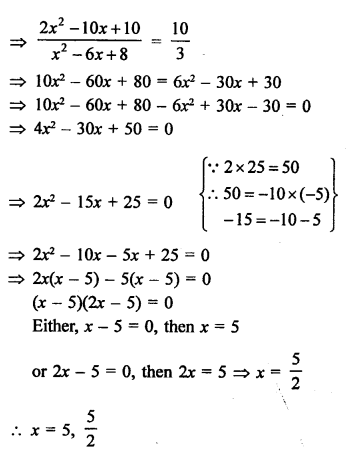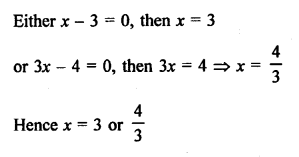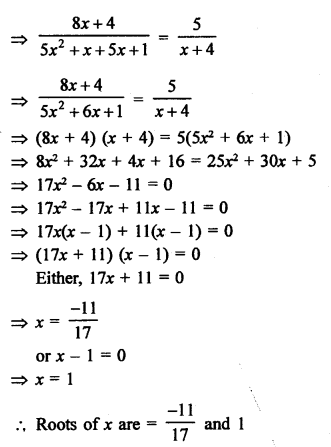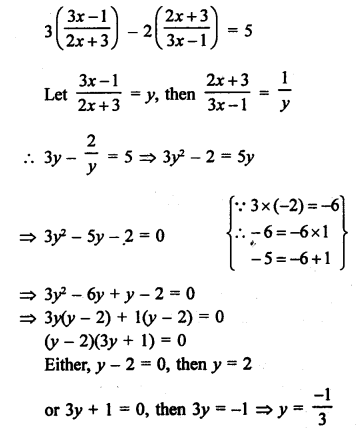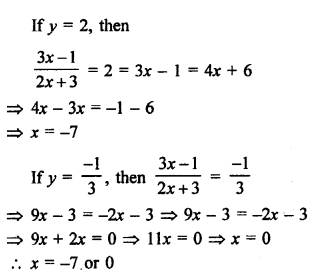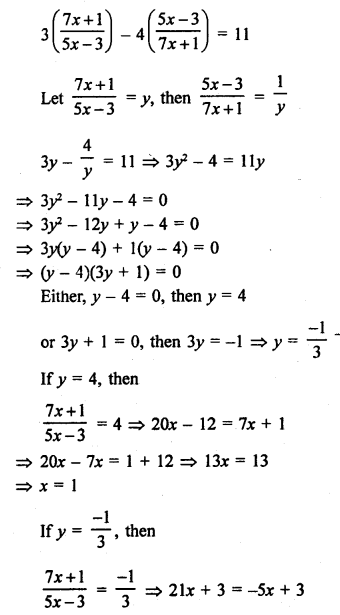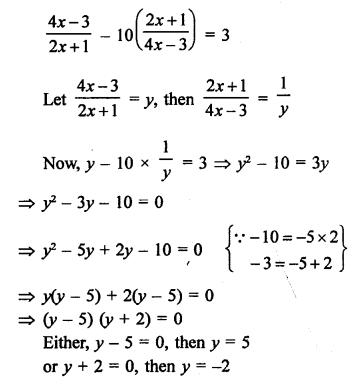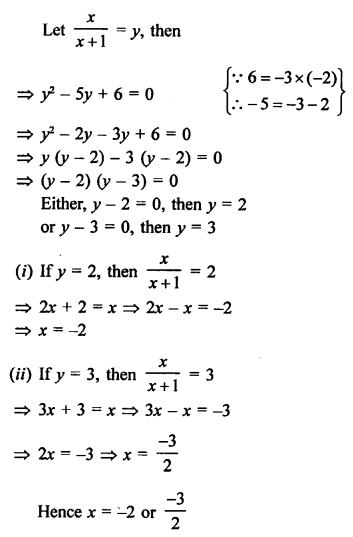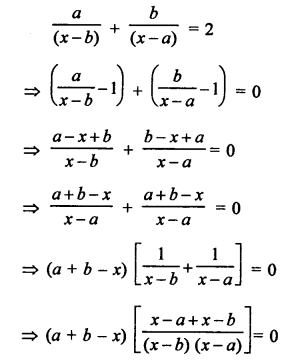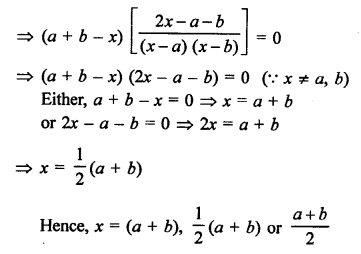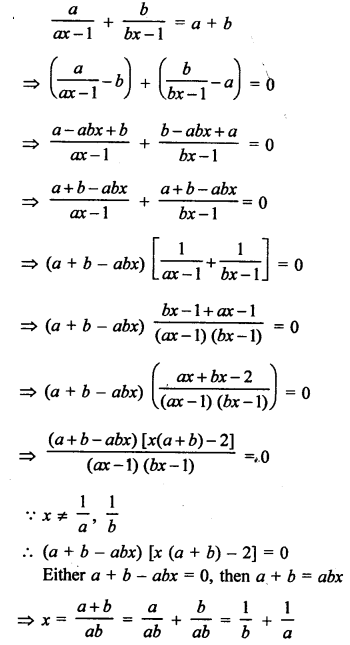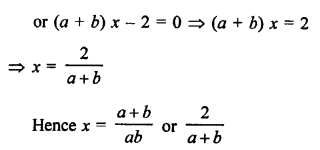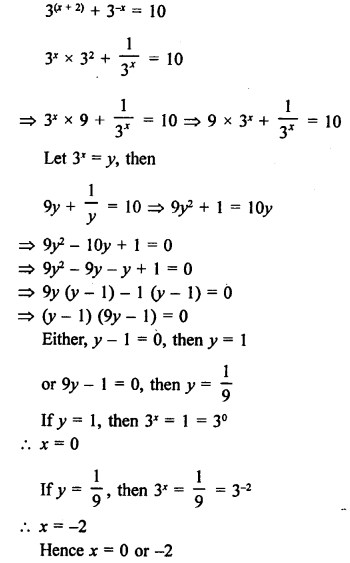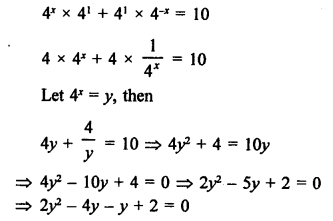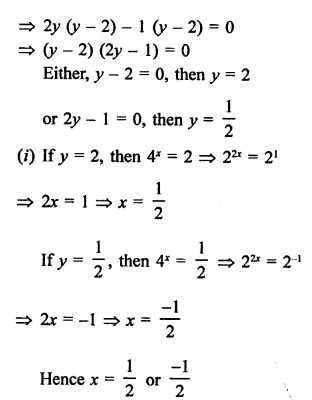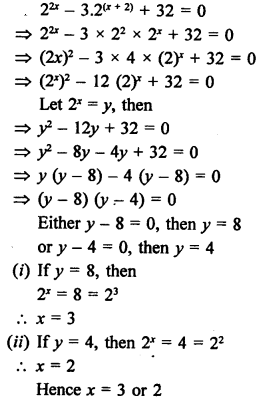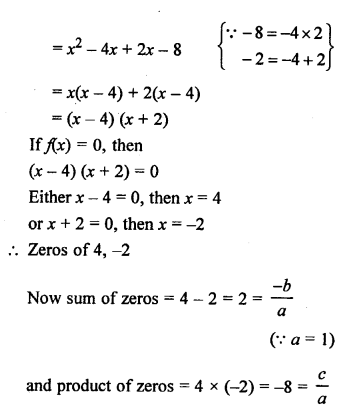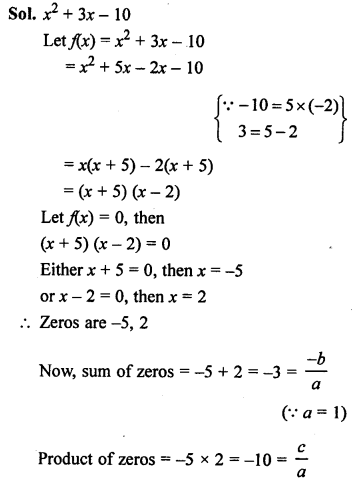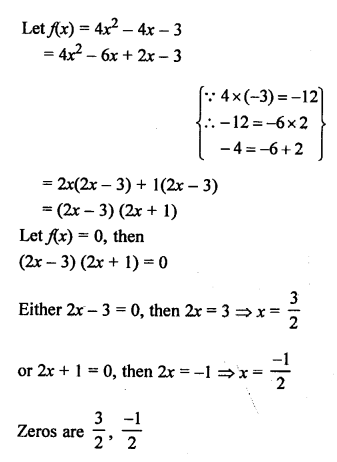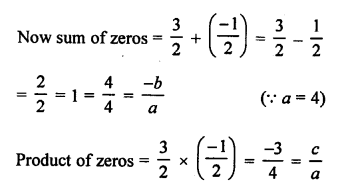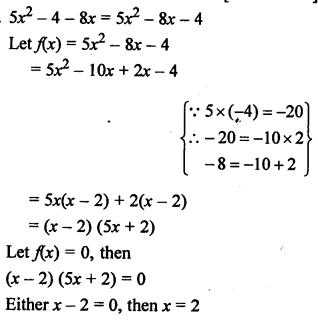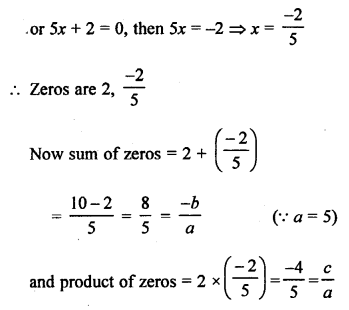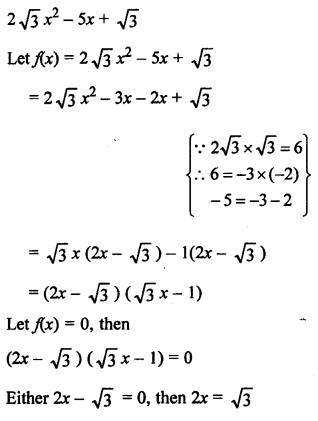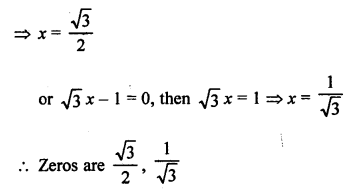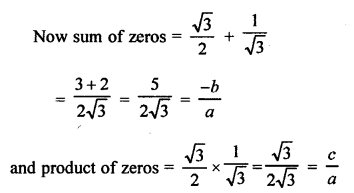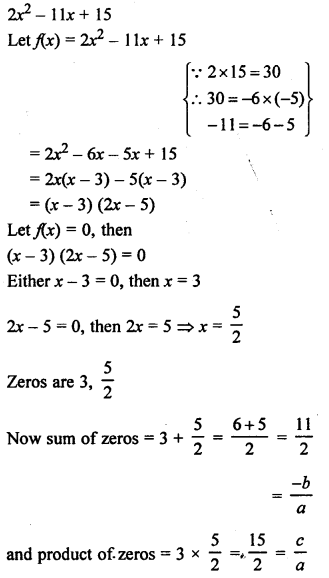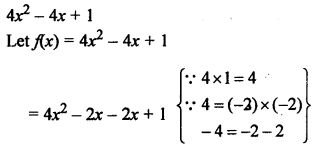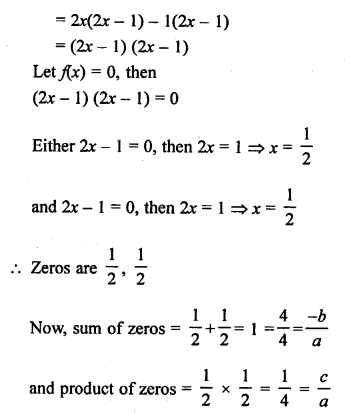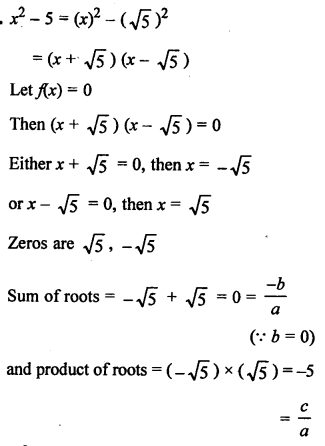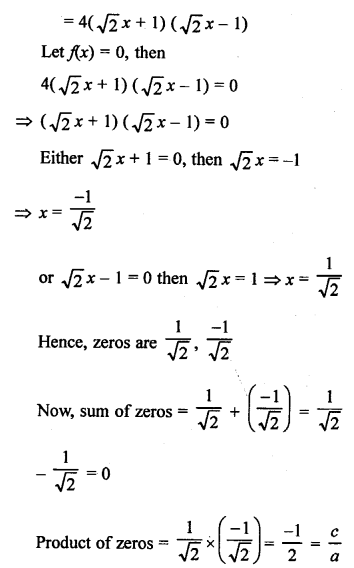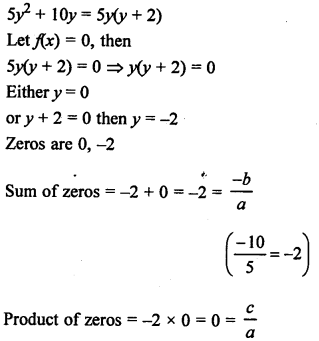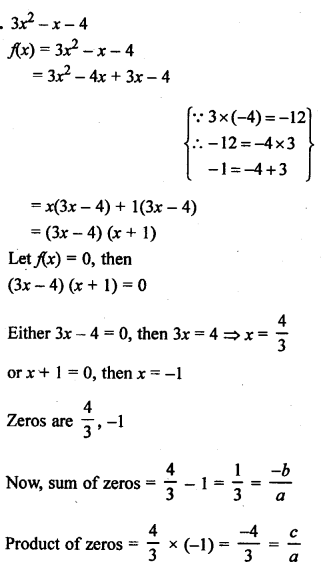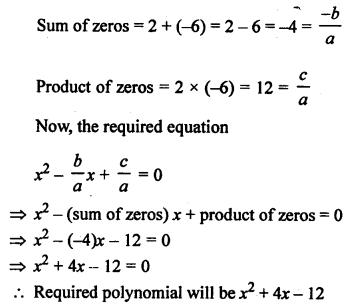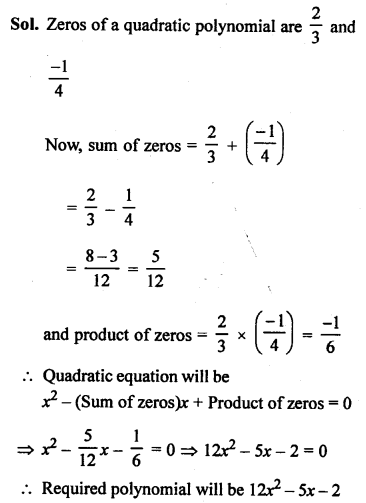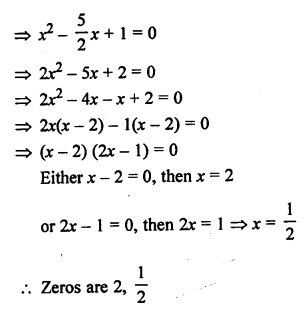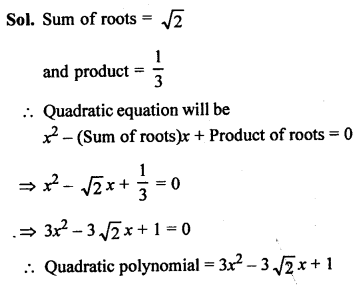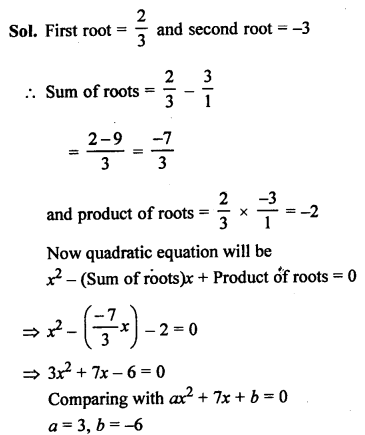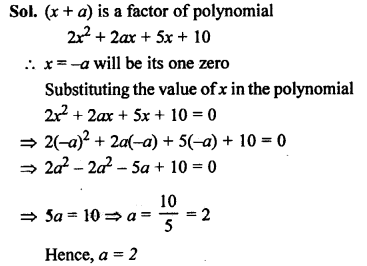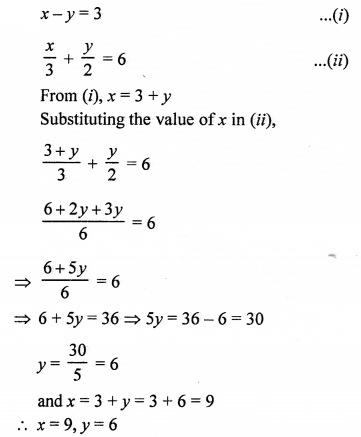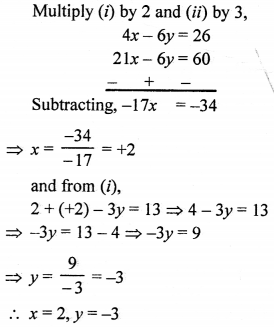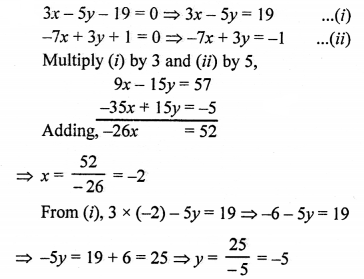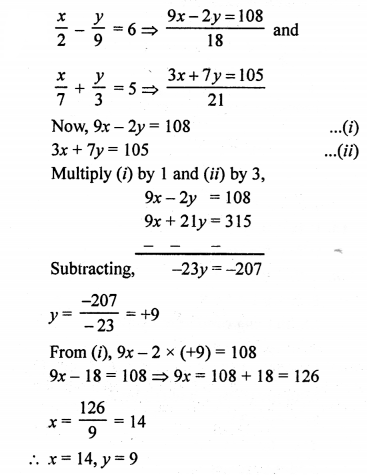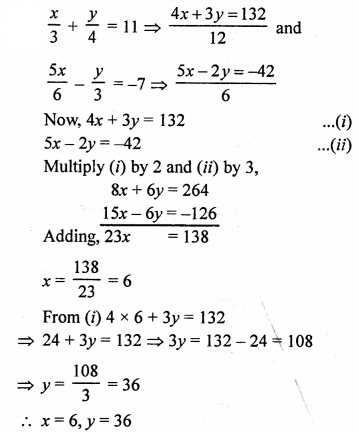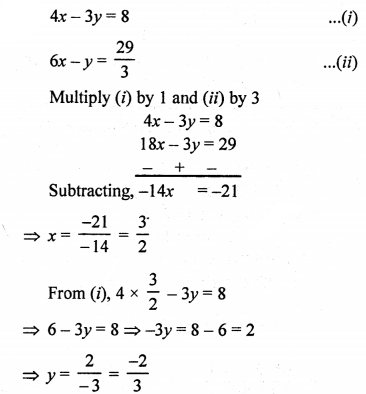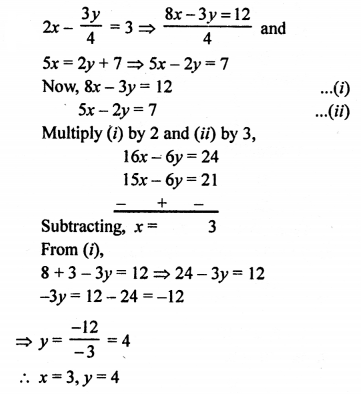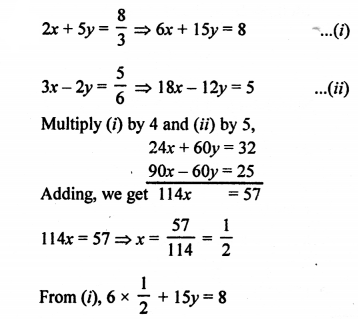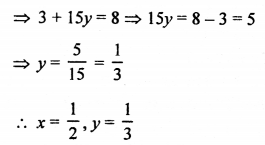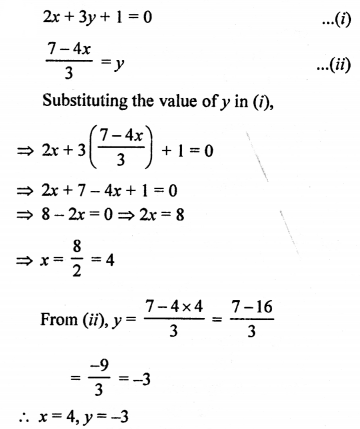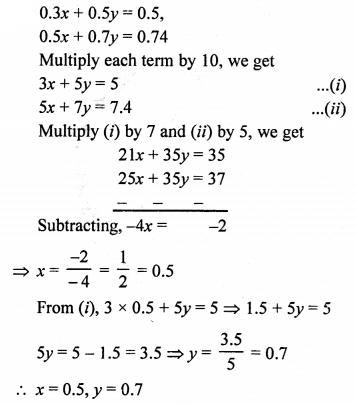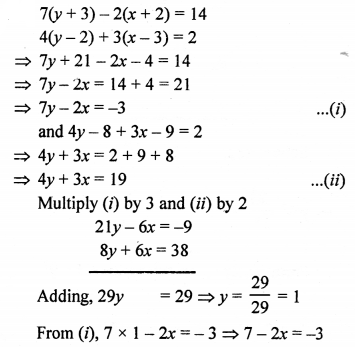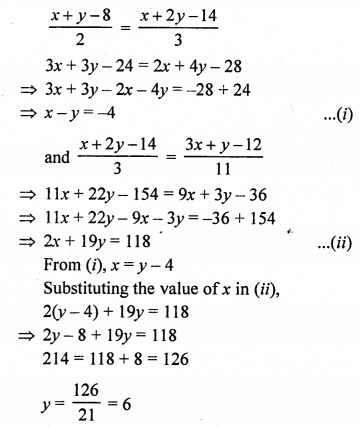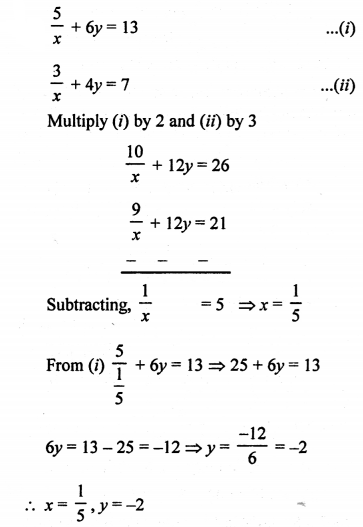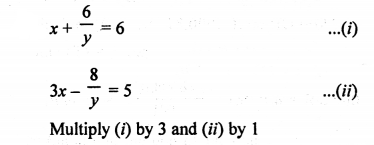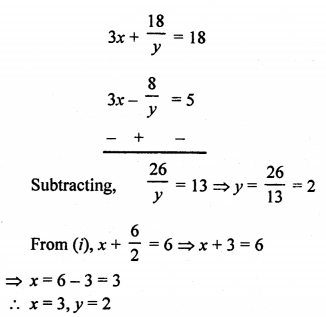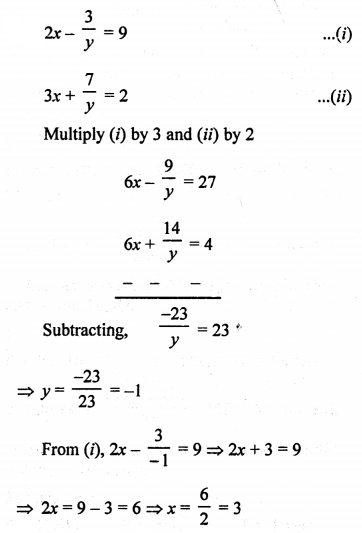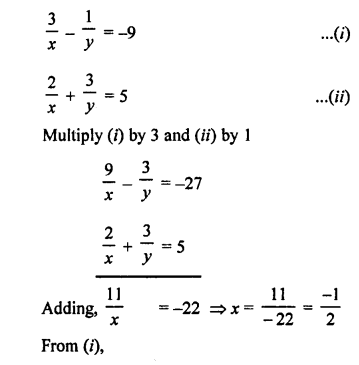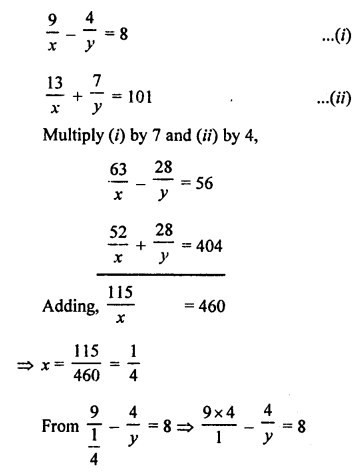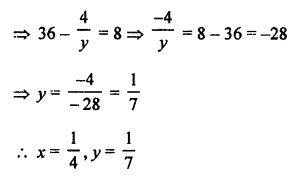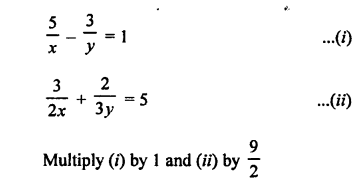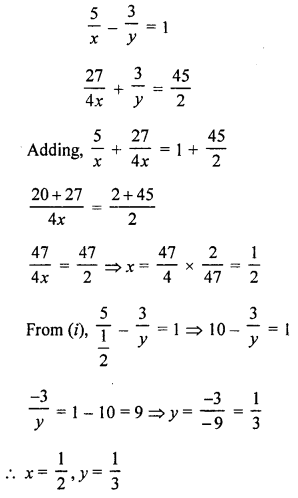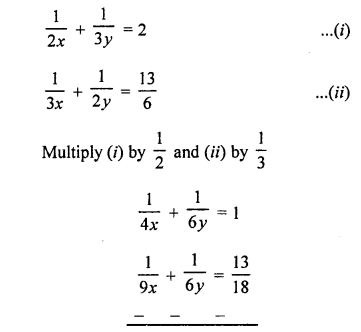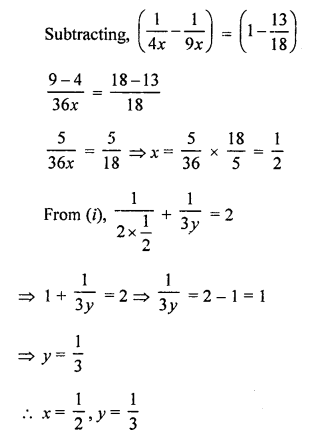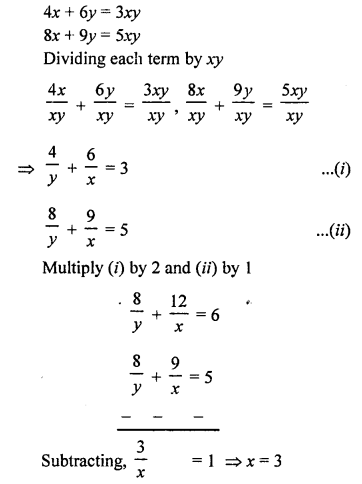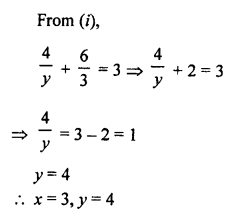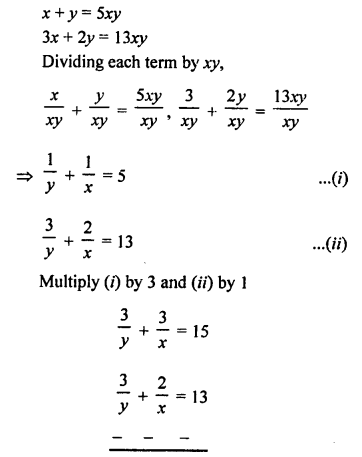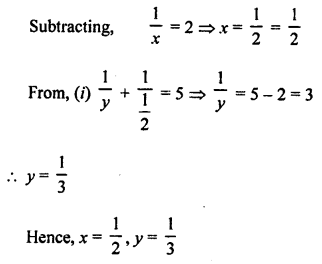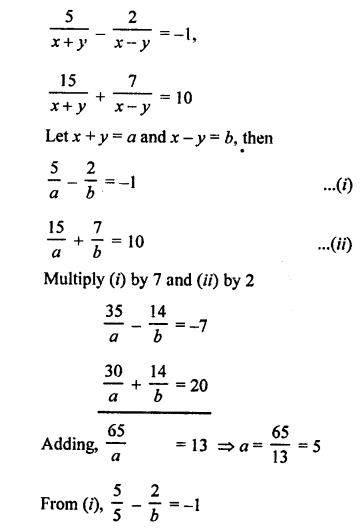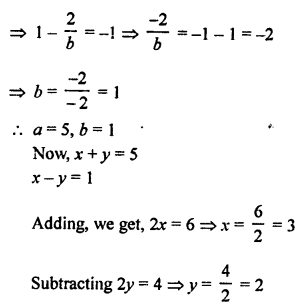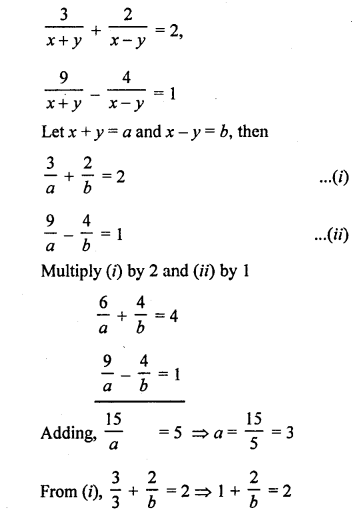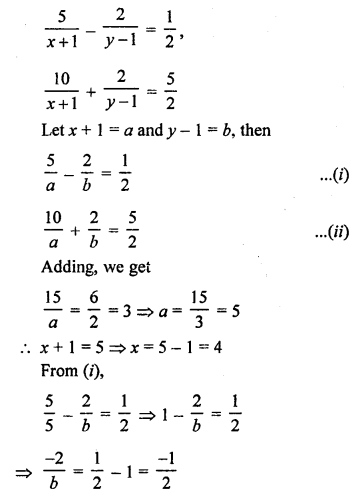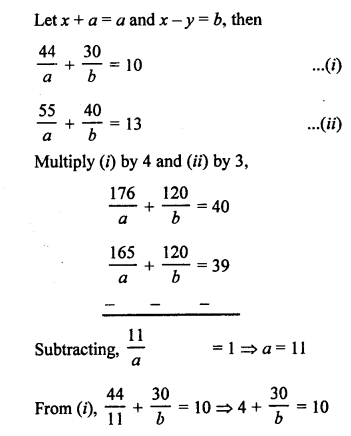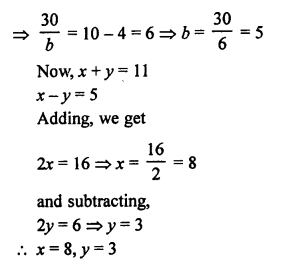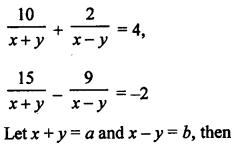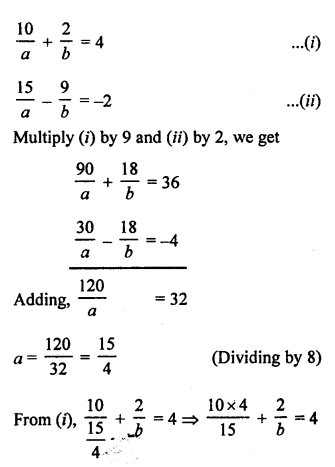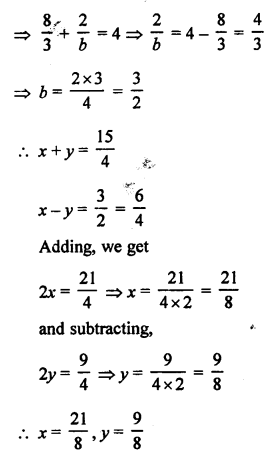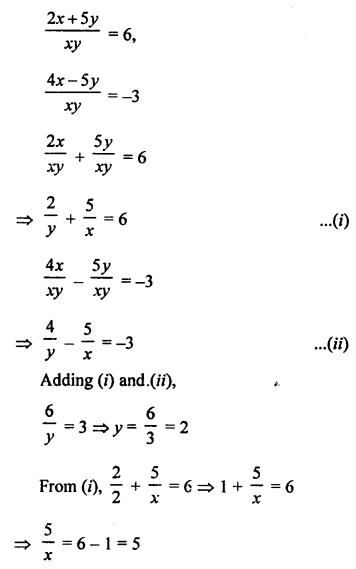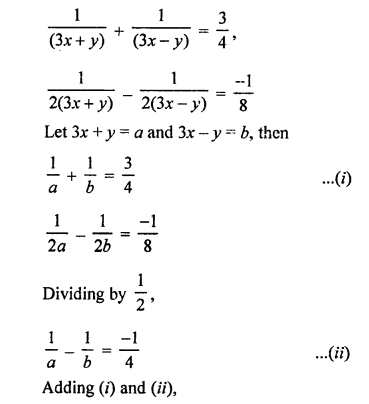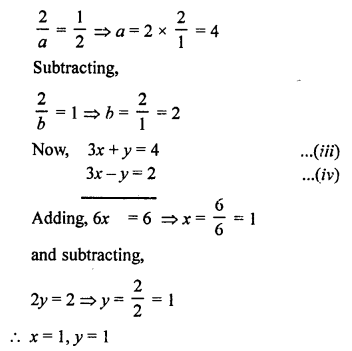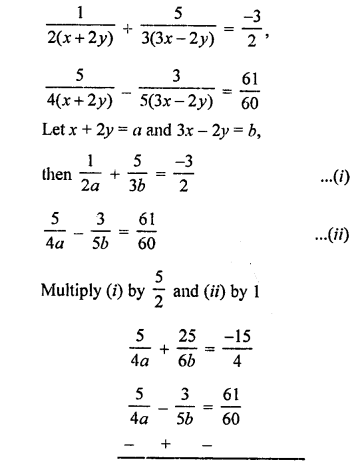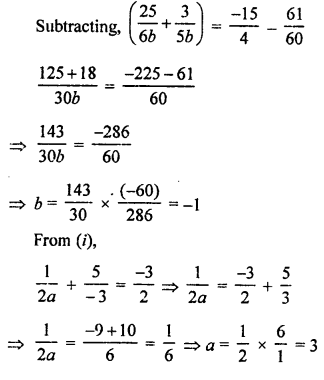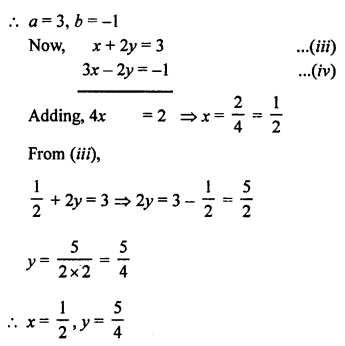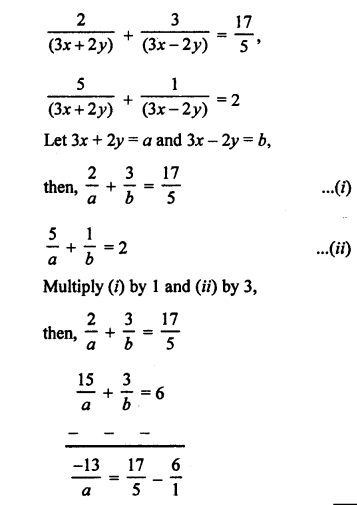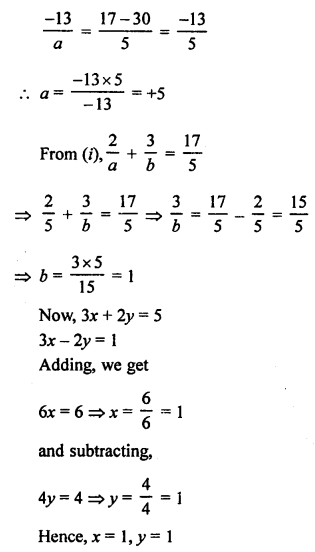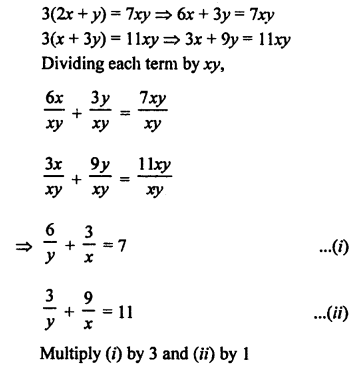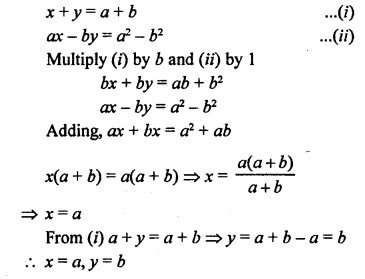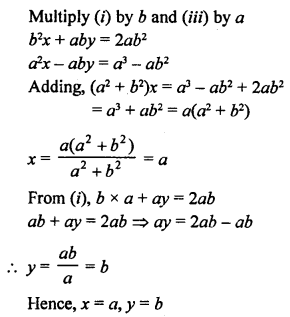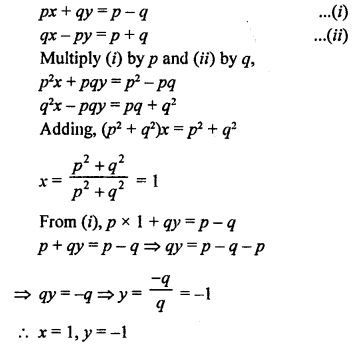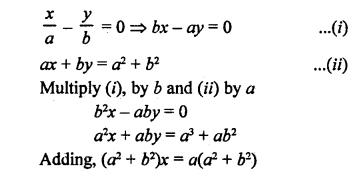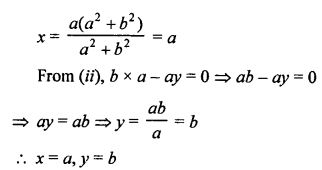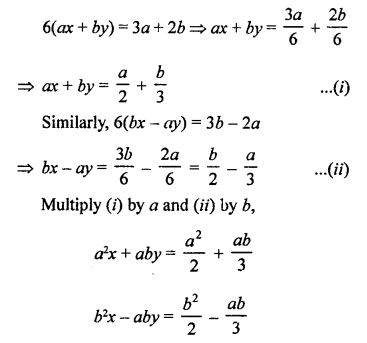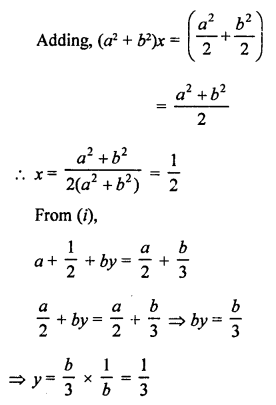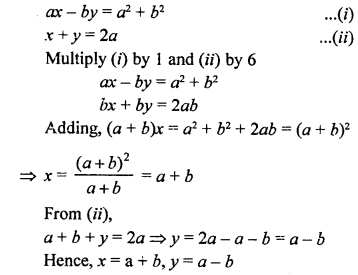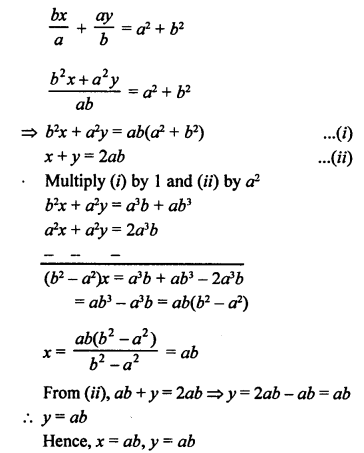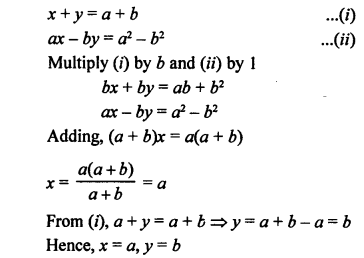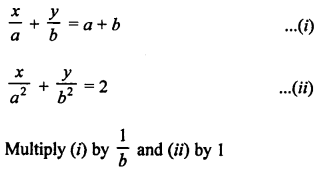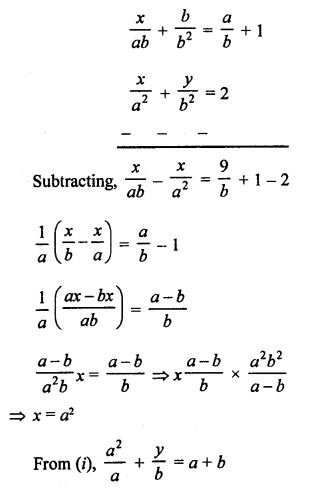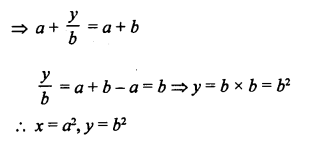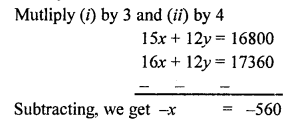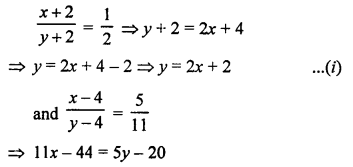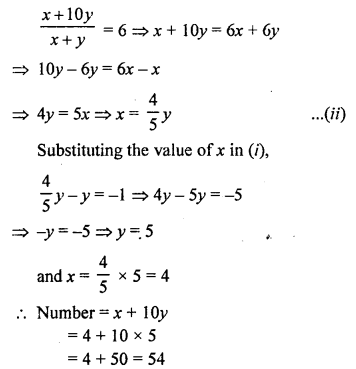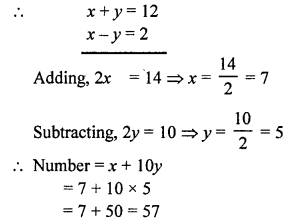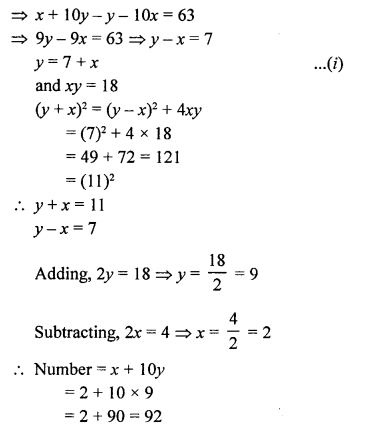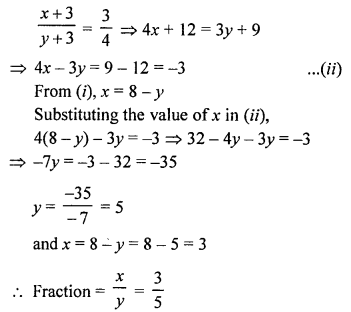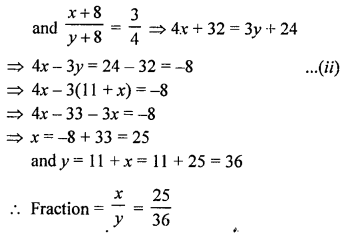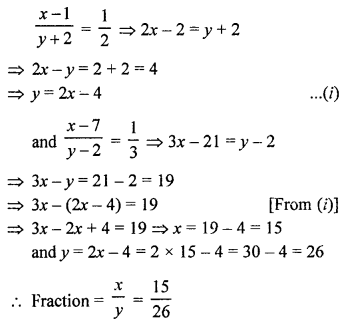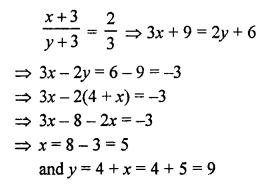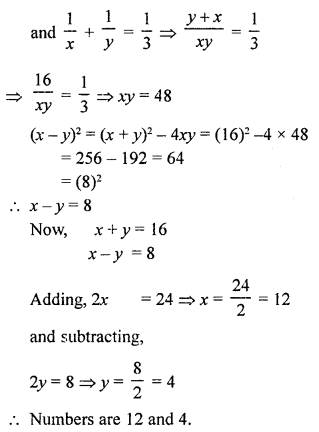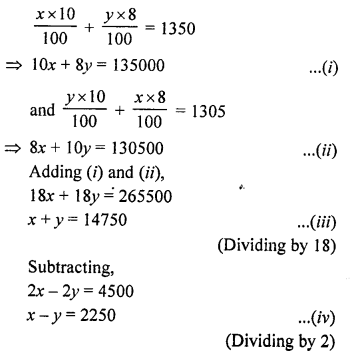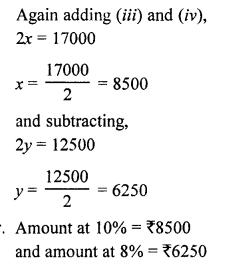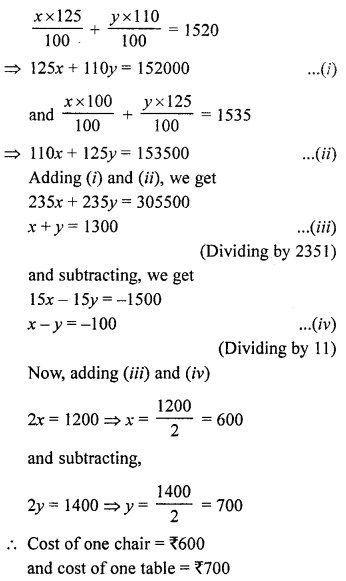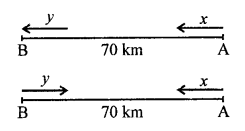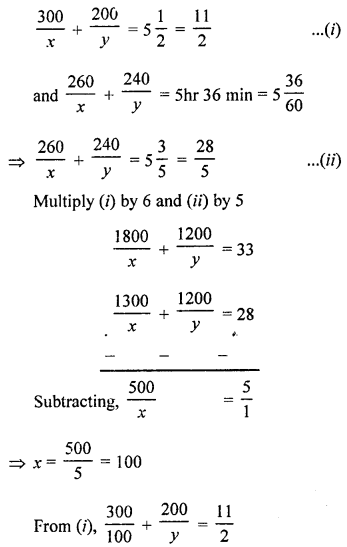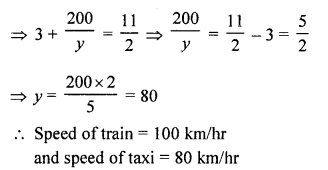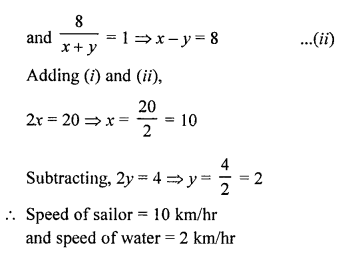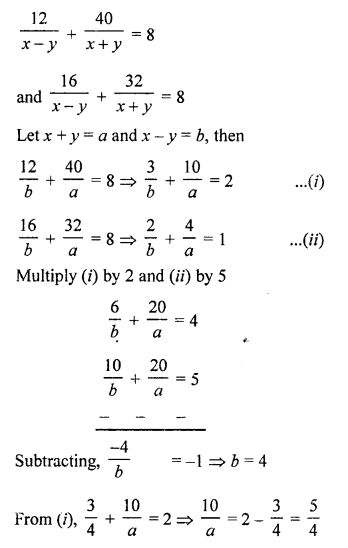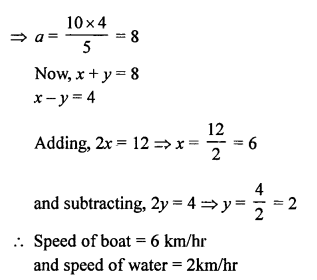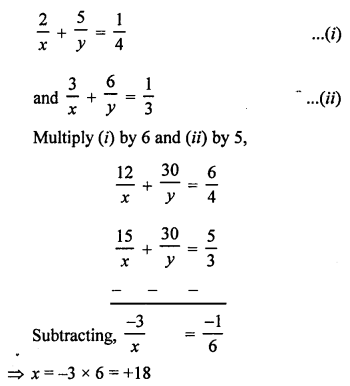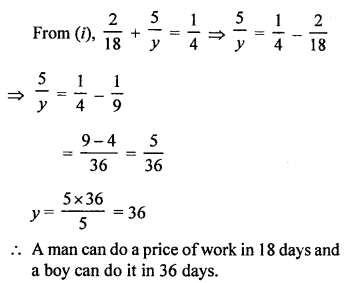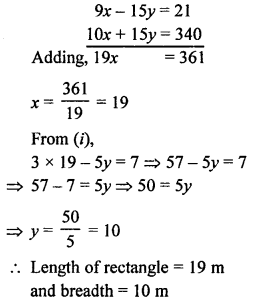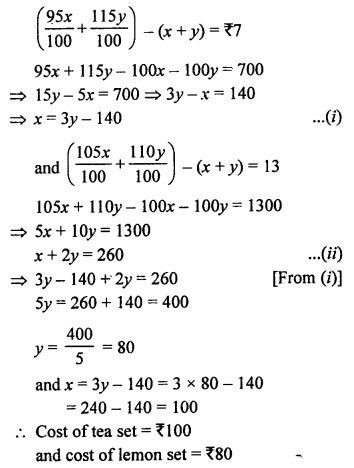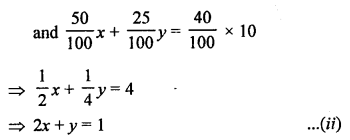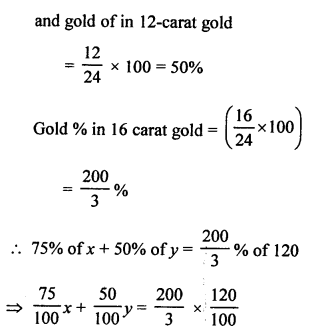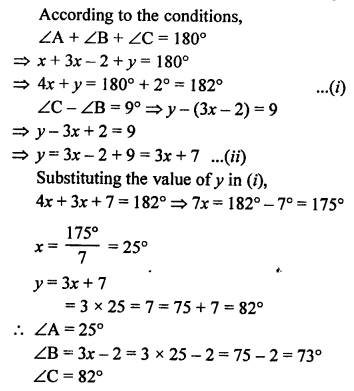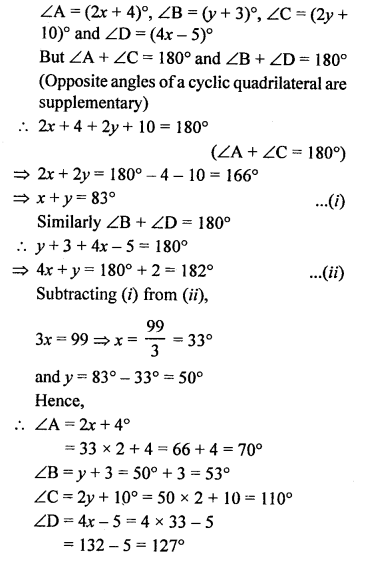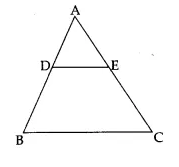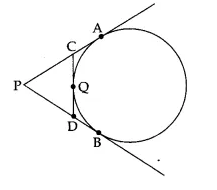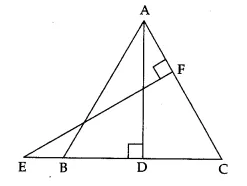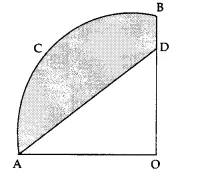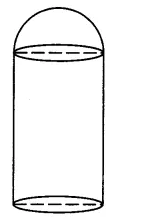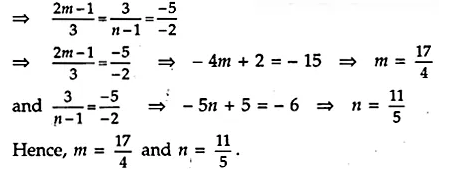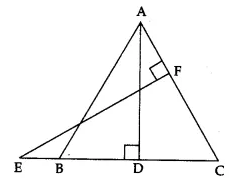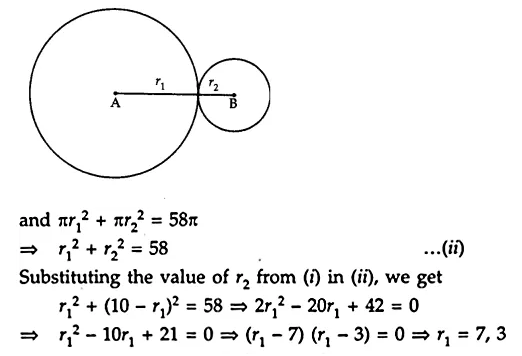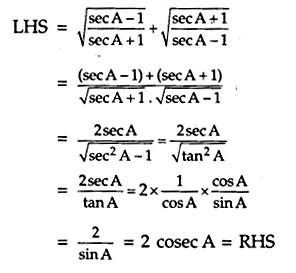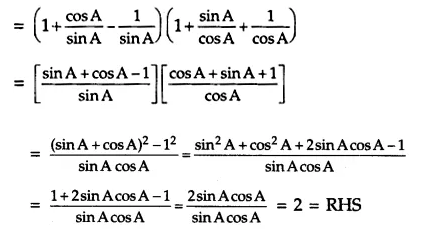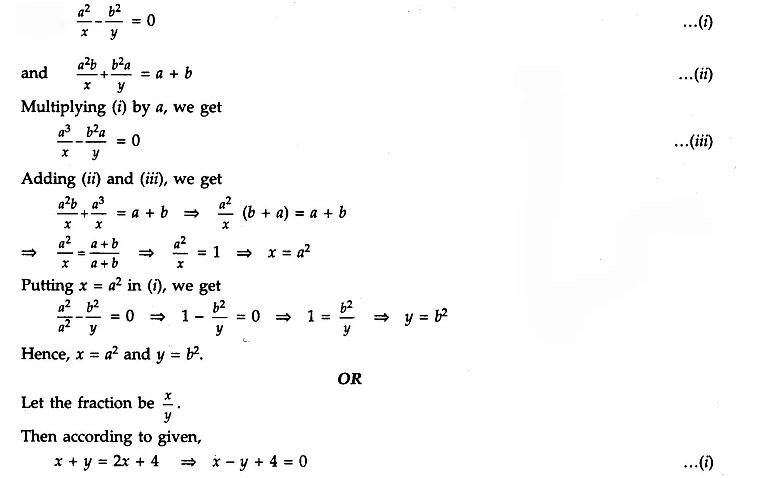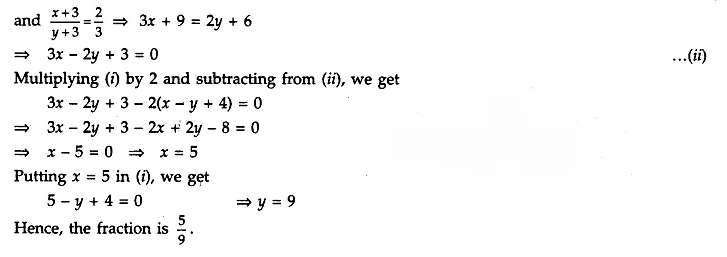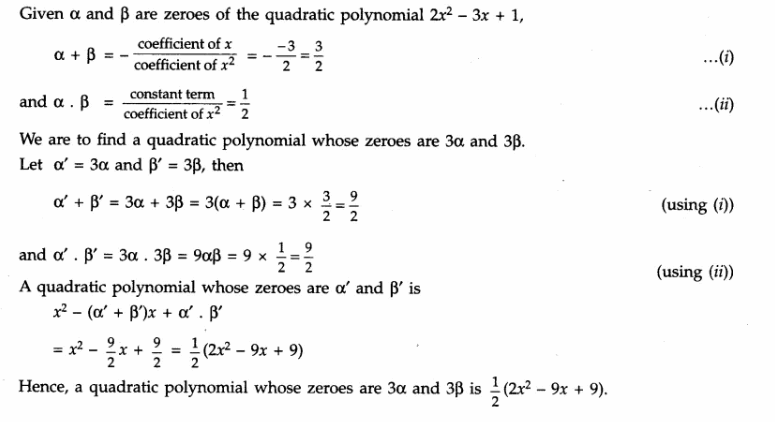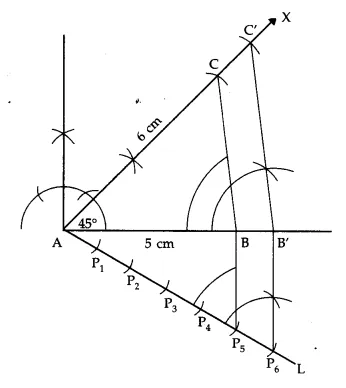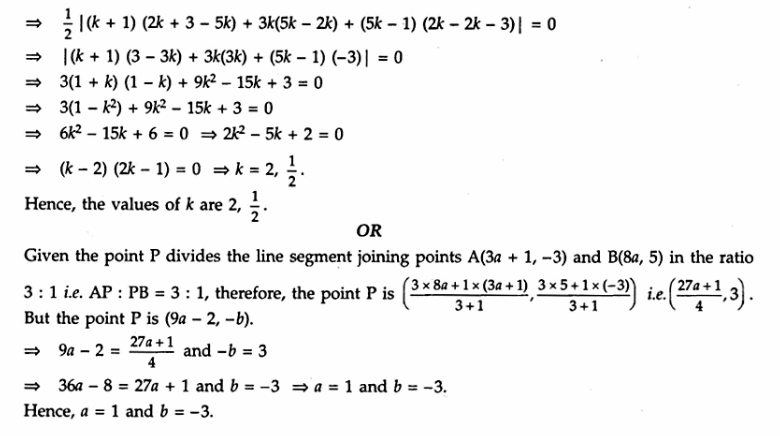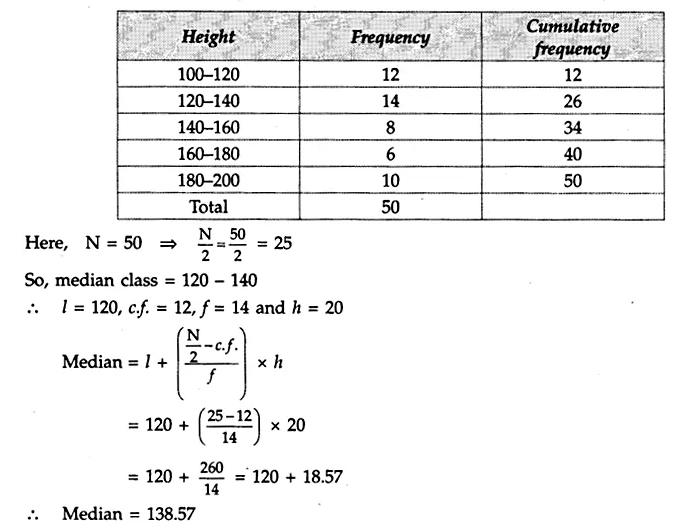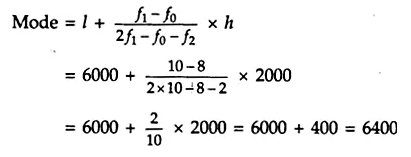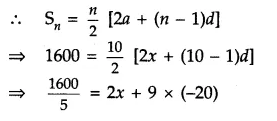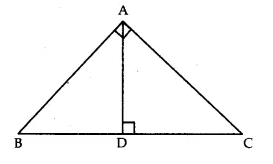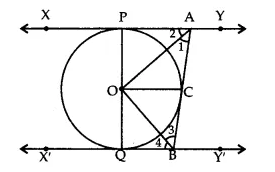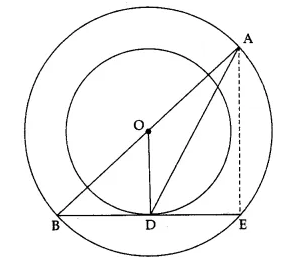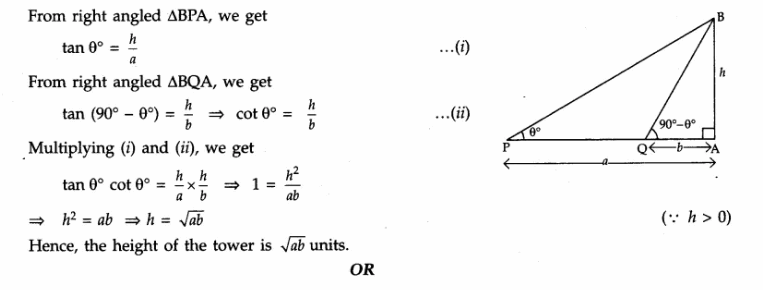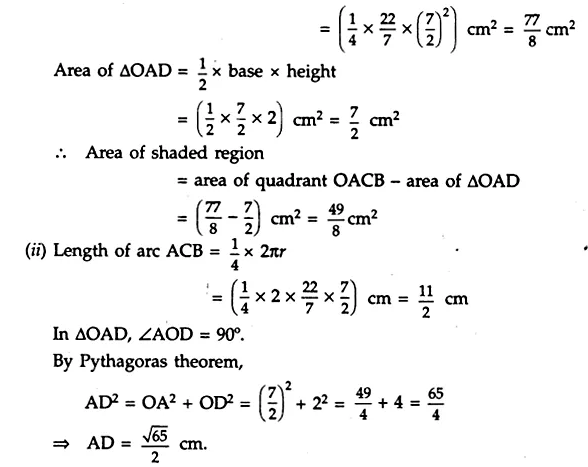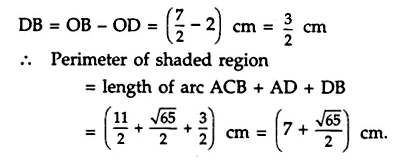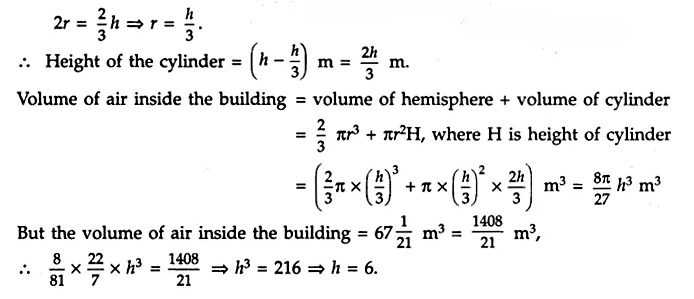NCERT Solutions for Class 10 Science Chapter 3 Metals and Non-metals
In this chapter, students will learn about the physical properties of metals, and non-metals, chemical properties of metals, how metals react with air, water, acid, other solutions, and metal salts, reactivity series.
Further students will come to know how metals and non-metals react, properties of ionic compounds, the occurrence of metals, extraction of metals, refining of metals, corrosion, prevention of corrosion. The chapter contains questions and answers exercise along with multiple choice questions.
These Solutions are part of NCERT Solutions for Class 10 Science. Here we have given NCERT Solutions for Class 10 Science Chapter 3 Metals and Non-metals. LearnInsta.com provides you the Free PDF download of NCERT Solutions for Class 10 Science (Chemistry) Chapter 3 – Metals and Non-metals solved by Expert Teachers as per NCERT (CBSE) Book guidelines. All Chapter 3 – Metals and Non-metals Exercise Questions with Solutions to help you to revise complete Syllabus and Score More marks.
NCERT Solutions for Class 10 Science Chapter 3 NCERT Questions
NCERT Solutions for Class 10 Science Chapter 3 In Text Book Questions
Question 1.
Give example of a metal which
(a) is a liquid at room temperature
(b) can be easily cut with a knife
(c) is the best conductor of heat
(d) is the poorest conductor of heat.
Answer:
(a) Mercury
(b) Sodium
(c) Silver
(d) Lead.
More Resources
- NCERT Solutions for Class 10 Science
- NCERT Exemplar Solutions for Class 10 Science
- HOTS Questions for Class 10 Science
- Value Based Questions in Science for Class 10
- Previous Year Question Papers for CBSE Class 10 Science
Question 2.
Explain the meaning of malleable and ductile.
Answer:
Malleable: The property due to which a substance can be beaten into sheets is known as malleability. Metals are malleable in nature.
Ductile. The property due to which a substance can be drawn into wires is known as ductility. Metals are ductile in nature.
Question 3.
Why is sodium kept immersed in kerosene oil ? (CBSE 2011)
Answer:
Sodium reacts with air and water both. It is a highly reactive metal. When kept in open, it readily combines with oxygen present in air to form its oxide. Similarly, it reacts with water vapours or moisture to form sodium hydroxide.

In order to preserve sodium metal, we generally keep it under kerosene so that neither air nor moisture may come in its contact.
Question 4.
Write the equations for the reactions of
(a) iron with steam
(b) calcium with water
(c) potassium with water.
Answer:
(a) 3Fe(s) + 4H2O (steam) ———–> Fe3O4(s) + 4H2(g)
(b) Ca(s) + 2H2O(aq) ———–> Ca(OH)2(s) +H2(g)
(c) 2K(s) + 2H2O(aq) ———–> 2KOH(aq) + H2(g)
Question 5.
Samples of four metals A, B, C and D were taken and were added to the following solutions one by one. The results obtained have been tabulated as follows :
|
Metal |
Solution to which metal is added |
|||
|
Iron(II) sulphate |
Copper(II) sulphate | Zinc sulphate |
Silver nitrate |
|
|
A |
No reaction | Displacement | — | — |
|
B |
Displacement | — | No reaction „ | — |
| C | No reaction | No reaction | No reaction |
Displacement |
| D | No reaction | No reaction | No reaction |
No reaction |
Use the table given above to answer the following questions :
(a) Which is the most reactive metal ?
(b) What would you observe when B is added to solution of copper(II) sulphate ?
(c) Arrange the metals A, B, C and D in order of increasing reactivity. (CBSE 2011)
Answer:
Based on the activity series, the relative position of the metals in which involved in solutions is : Zn > Fe > Cu > Ag. On the basis of the results given in the table .
- Metal A is more reactive than copper and less reactive than iron.
- Metal B is more reactive than iron and less reactive than zinc. –
- Metal C is only more reactive than silver and less reactive than other metals.
- Metal D is the least reactive in nature.
In the light of above information, we can conclude that
(a) Metal B is the most reactive.
(b) Since B is more reactive than iron, it is also more reactive than copper. This means that it would displace copper from copper(II) sulphate solution. The blue colour of solution will slowly fade.
(c) The decreasing order of reactivity of metals is: B>A>C>D.
Question 6.
Which gas is produced when a reactive metal reacts with dilute hydrochloric acid ? Write the chemical reaction when iron reacts with dilute H2SO4. (CBSE 2010)
Answer:
Hydrogen gas (H2) is produced when a reactive metal reacts with dilute hydrochloric acid. Iron and dilute H2SO4 react as follows :
Fe(s) + H2SO4(aq) ————> FeSO4(aq) + H2(g)
Hydrogen gas is evolved in this reaction also.
Question 7.
What would you observe when zinc is added to a solution of iron (II) sulphate ? Write the chemical reaction that takes place. (CBSE 2010)
Answer:
The green colour of the solution would slowly disappear. Zinc would gradually dissolve and iron would get precipitated at the bottom of the beaker.
![]()
Question 8.
(i) Write electron-dot structures for sodium, magnesium and oxygen.
(ii) Show the formation of Na2O and MgO by the transfer of electrons.
(iii) What are the ions present in these compounds ?
Answer:
(i)
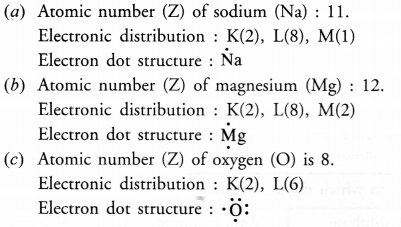
(ii) Formation of sodium oxide (Na2O)

Formation of magnesium oxide (MgO)

(iii) For answer, consult structures given above.
Question 9.
Why do ionic compounds have high melting points ? (CBSE 2014)
Answer:
In the formation of ionic compounds, positive ions (cations) and negative ions (anions) participate. These are closely packed and the ionic compounds exist as crystalline solids. They have strong inter ionic forces of attraction and have high melting and boiling points.
Question 10.
Define the following terms :
- Minerals
- Ores
- Gangue.
Answer:
- Minerals : These are the combined states of metals and non-metals present in earth’s curst.
- Ores : The minerals from which metals can be conveniently and profitably extracted, are called ores.
- Gangue : It represents the earthy impurities such as mud, sand and clay associated with the ore.
Question 11.
Name two metals which are formed in nature in free state.
Answer:
The metals are gold (Au) and platinum (Pt).
Question 12.
Which chemical process is used for obtaining a metal from its oxide ?
Answer:
The chemical process is known as reduction.
Question 13.
Metallic oxides of zinc, magnesium and copper were heated with the following metals. In which cases, will you find displacement reactions taking place ?
|
Metal |
Zinc | Magnesium |
Copper |
|
Zinc oxide Magnesium oxide Copper oxide |
Relative positions of these metals in the activity series are : Mg, Zn, Cu : In the light of this :
Answer:
Magnesium (Mg) will displace both zinc (Zn) and copper (Cu) from their oxides
Mg + ZnO ———-> MgO + Zn
Mg + CuO ———-> MgO + Cu
Zinc will displace copper from copper oxide.
Zn + CuO ———–> ZnO + Cu
Copper is least reactive and will not initiate displacement reaction.
Question 14.
Which metals do not corrode easily ?
Answer:
Metals such as gold (Au) and platinum (Pt) present at the bottom of the activity series do not corrode easily.
Question 15.
What are alloys ? (CBSE 2011)
Answer:
Alloys are the homogeneous mixture of two or more metals or even metals and non-metals.
NCERT Solutions for Class 10 Science Chapter 3 NCERT End Exercise
Question 1.
Which of the following will give displacement reactions ?
(a) NaCl solution and copper metal
(b) MgCl2 solution and aluminium metal
(c) FeSO4 solution and silver metal
(d) AgNO3 solution and copper metal.
Answer:
(d). Only AgNO3 solution will give displacement reaction with copper (Cu) because copper is placed above silver in the activity series.
Question 2.
Which of the following methods is suitable for preventing an iron frying pan from rusting ?
(a) applying grease
(b) applying paint
(c) applying a coating of zinc
(d) all the above.
Answer:
Theoretically all the three methods are helpful for preventing an iron frying pan from rusting. However, the constituents of both grease and paint are mostly organic compounds. They cannot withstand the heat and do not last. Therefore, applying a coating of zinc (galvanisation) is the best method. Option (c) is correct.
Question 3.
An element reacts with oxygen to give a compound with high melting point. This compound is also water soluble. The element is likely to be :
(a) Calcium
(b) Carbon
(c) Silicon
(d) Iron
Answer:
(a). Calcium (Ca) combines with oxygen to form calcium oxide (CaO) with very high melting point. CaO dissolves in water to form calcium hydroxide

Question 4.
Food cans are coated with tin and not with zinc because
(a) Zinc is costlier than tin
(b) Zinc has higher melting point than tin
(c) Zinc is more reactive than tin
(d) Zinc is less reactive than tin.
Answer:
(c). Zinc is more reactive than tin and reacts with organic acids present in food to form poisonous compounds. Since tin is placed below zinc in the activity series, it is less reactive and does not react with the organic acids. Therefore, (c) is the correct option.
Question 5.
You are given a hammer, a battery, a bulb, wires and a switch :
(a) Flow could you use them to distinguish between samples of metals and non metals ?
(b) Assess the usefulness of these tests to distinguish between metals and non metals.
Answer:
(a) With the help of hammer, convert both the metal and non-metal (solid) in the form of plates or rods. Metal will readily form these since they are malleable. Non-metals being brittle will break when struck with hammer. They will form plates with difficulty Now construct a cell in both the cases using these plates as electrodes and switch on the current. If the bulb glows, this means that the electrodes are of metals. In case, this does not glow, this means that the electrodes are of non-metals.
(b) From these tests, we may conclude that
- Metals are malleable while non-metals are not.
- Metals are good conductors of electricity while non-meals are not (graphite is an exception).
Question 6.
What are amphoteric oxides ? Give examples of two amphoteric oxides.
Answer:
These are the oxides which can act both as acids and bases. For example, aluminium oxide (Al2O3) and zinc oxide (ZnO). The amphoteric character of the two oxides are shown by the following reactions.
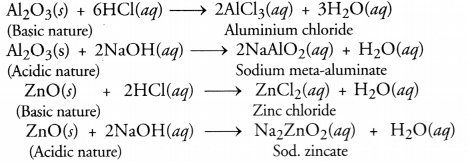
Question 7.
Name two metals which can displace hydrogen from dilute acids and two metals which can not do so.
Answer:
Sodium and calcium can displace hydrogen from dilute acids Copper and silver can not displace hydrogen from dilute acids.
Question 8.
In the electrolytic refining of metal M, name anode, cathode and electrolyte.
Answer:
Anode : Rod of the impure metal
Cathode : Rod of pure metal
Electrolyte : Aqueous solution of soluble salt of metal M.
Question 9.
Pratyush took sulphur powder on a spatula and heated it. He collected the gas evolved by inverting a test tube over it as shown in the figure.
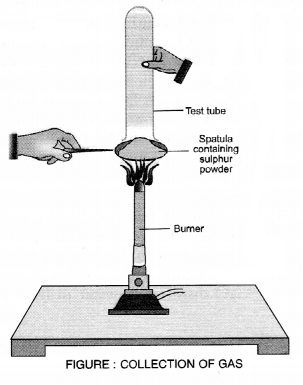
What will be the action of gas on
- dry litmus paper ?
- moist litmus paper ?
Write a balanced chemical equation for the reaction taking place.
(CBSE 2011)
Answer:
The gas evolved upon heating sulphur powder on a spatula is sulphur dioxide
![]()
- SO2(g) has no action of dry litmus paper.
- SO2(g) dissolves in moisture (water) present in moist litmus paper to form sulphurous acid. In acidic solution, moist litmus paper will change to red.

Question 10.
State two ways to prevent the rusting of iron.
Answer:
- By applying a coating of grease or paint on the surface of iron.
- By depositing a layer of zinc on the surface of iron. The process is called galvanisation.
Question 11.
What types of oxides are formed when non-metals combine with oxygen ?
Answer:
The oxides are generally acidic in nature which means that when dissolved in water, their solutions change blue litmus to red. For example,

Question 12.
Give reasons for the following :
(a) Platinum, gold and silver are used to make jewellery.
(b) Sodium, potassium and lithium are stored under oil.
(c) Aluminium is a highly reactive metal but still used for making cooking utensils.
(d) Carbonate and sulphide ores are usually converted into oxides during the process of extraction. (CBSE 2013, 2014)
Answer:
(a) These metals placed at the bottom of the activity series are very little reactive in nature. Gold and
platinum are known as noble metals. They are not affected by air, water and by chemicals. Since they have bright lustre, jewellery can be made from these metals.
(b) There are reactive metals placed high in the activity series. In air, their surface gets tarnished due to presence oxygen, water vapours and carbon dioxide in air. With water, these react violently to evolve so much heat that is not possible to handle them. These metals are generally kept under kerosene which does not contain air and water.
(c) When exposed to air, the metal changes its oxide called aluminium oxide (Al2CO3). It gets deposited over the surface of the metal and forms a protective coating on the surface. Due to the presence of this layer, the metal becomes unreactive and can be used in making cooking utensils.
(d) Both carbonate and sulphide ores of metals cannot be directly reduced to metallic state. Flowever, metal oxides can be easily reduced with coke or other reducing agents. Both are therefore, converted into their respective oxides by calcination process (for carbonate ores) and by roasting process (for sulphide ores).
Metal oxides can be easily reduced to metallic form with coke (C) or any other suitable reducing agent. Therefore, carbonates and sulphides are converted to the oxide form by processes of calcination and roasting and are not directly reduced.
Question 13.
You must have seen tarnished copper vessels being cleaned with lemon or tamarind juice. Explain why these sour substances are effective in cleaning the vessels. (CBSE 2014)
Answer:
Copper metal slowly reacts with water, carbon dioxide and oxygen present in air to form basic copper carbonate which is green in colour. Its layer slowly gets deposited on the surface of the metal. Now lemon

juice contains citric acid while tartaric acid is present is tamrind. Both these acids react with basic copper carbonate to form soluble salts such as copper acetate (with citric acid) and copper tartarate (with tartaric acid). The equations for the reactions are complicated and are not given. These salts are removed from the surface of the copper metal and the surface of the metal shines.
Question 14.
A man went door to door posing as a goldsmith. He promised to bring back the glitter on dull gold ornaments. An unsuspecting lady gave a set of gold bangles to him which he dipped in a particular solution. The bangles sparked like new but their weight was reduced drastically. The lady got upset and after a futile argument, the man beat a hasty retreat. Can you predict the nature of the solution used by the impositer ?
Answer:
The man had actually used the solution of aqua regia (mixture of cone. HCl and cone. HNO3 in the ratio of 3 : 1 by volume) which has dissolved gold forming soluble auric chloride (AuCl3). Since gold actually reacted, there was a loss in weight of the gold bangles. With the removal of the dull layer of gold from the surface, there was original shine on the bangles. The chemical reactions have been

Question 15.
Give reason as to why copper is used to make hot water tanks and not steel (an alloy of iron).
Answer:
Copper is a better conductor of heat than steel which is an alloy of iron. Though copper is costlier than steel, it is used to make hot water tanks for storing hot water in preference to steel.
Question 16.
Differentiate between metals and non-metals on the basis of chemical properties.
For the distinction in the chemical characteristics,
|
Property |
Metals |
Non-metals |
|
1. Nature of oxides |
Oxides of the metals are generally basic in nature (Exception : ZnO and Al2O3 are amphoteric oxides). | Oxides of non-metals are mostly acidic in nature (Exception : CO and N2O are neutral oxides). |
|
2. Electrochemical behaviour |
Metals normally form cations by the loss of electrons. This means that these are electropositive in nature. | Non-metals normally form anions by the gain of electrons. This means that these are electronegative in nature. |
| 3. Action with dilute acids | Active metals evolve hydrogen on reacting with dilute HCl and dilute H2SO4. | Non-metals do not react with dilute acids |
| 4. Nature of compounds | The compounds of metals are mostly ionic in nature. | Compounds of non-metals are mostly covalent although there are many exceptions. |
| 5. Oxidising and reducing nature | Metals act as reducing agents as their atoms lose electrons. For example, Na —— > Na+ + e– |
Non-metals act as oxidising agents as their atoms accept electrons. For example, Cl + e–——–>Cl– |
Hope given NCERT Solutions for Class 10 Science Chapter 3 are helpful to complete your science homework.
If you have any doubts, please comment below. Learn Insta try to provide online science tutoring for you.
NCERT Solutions for Class 10 Science Chapter 3 Metals and Non-metals


